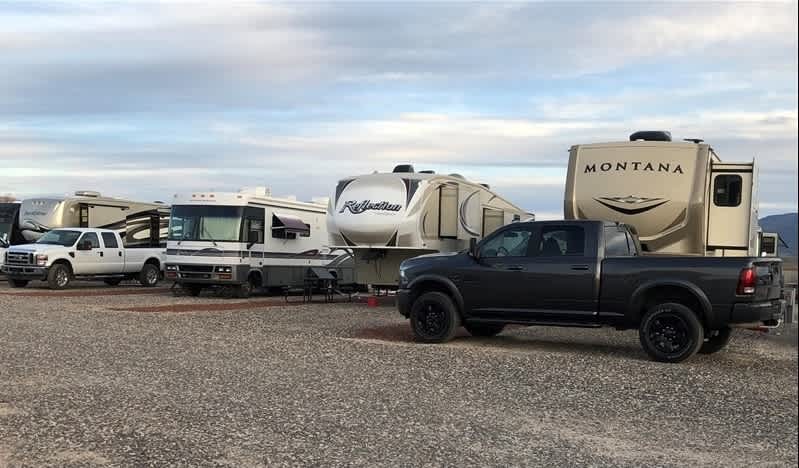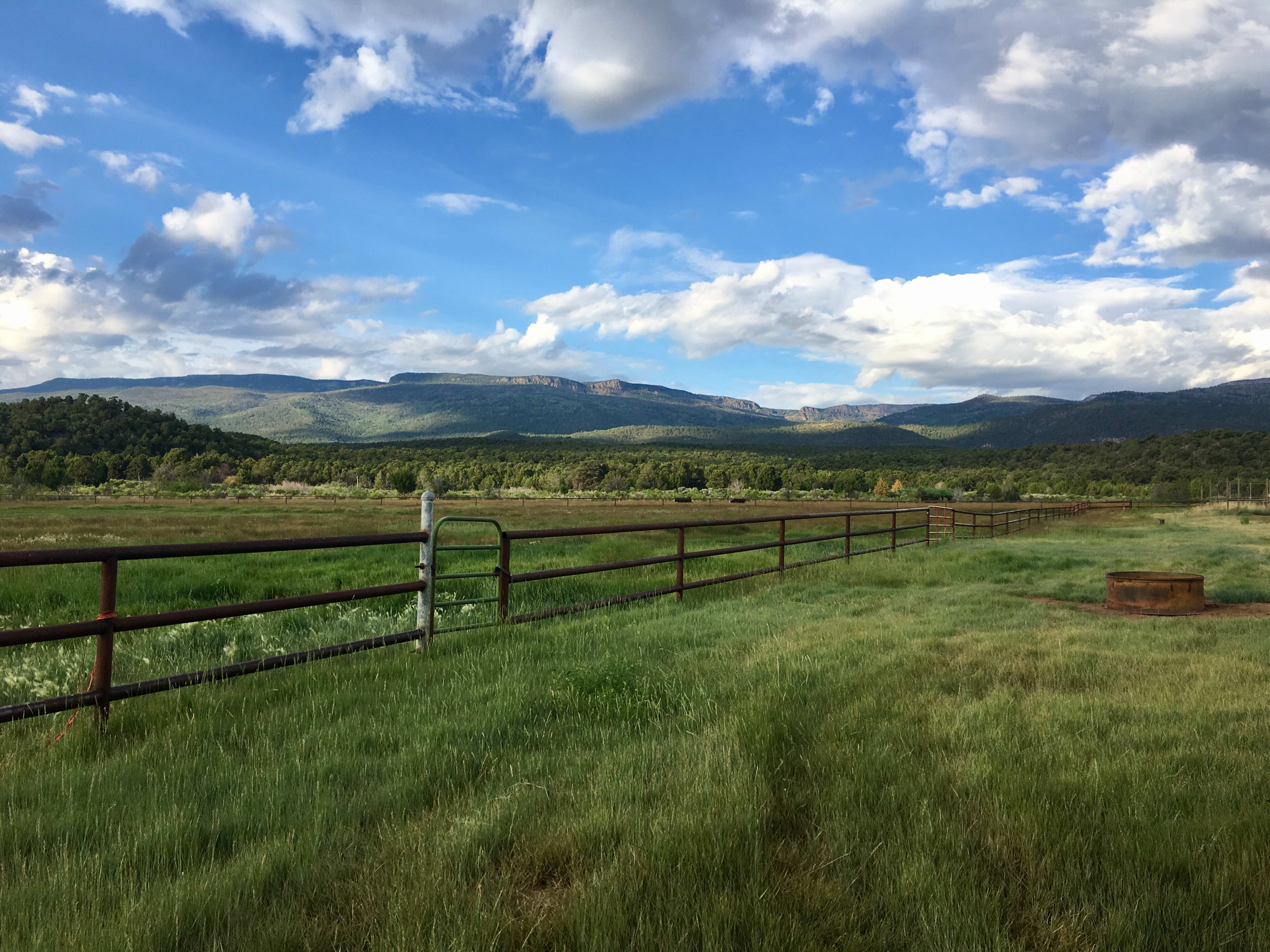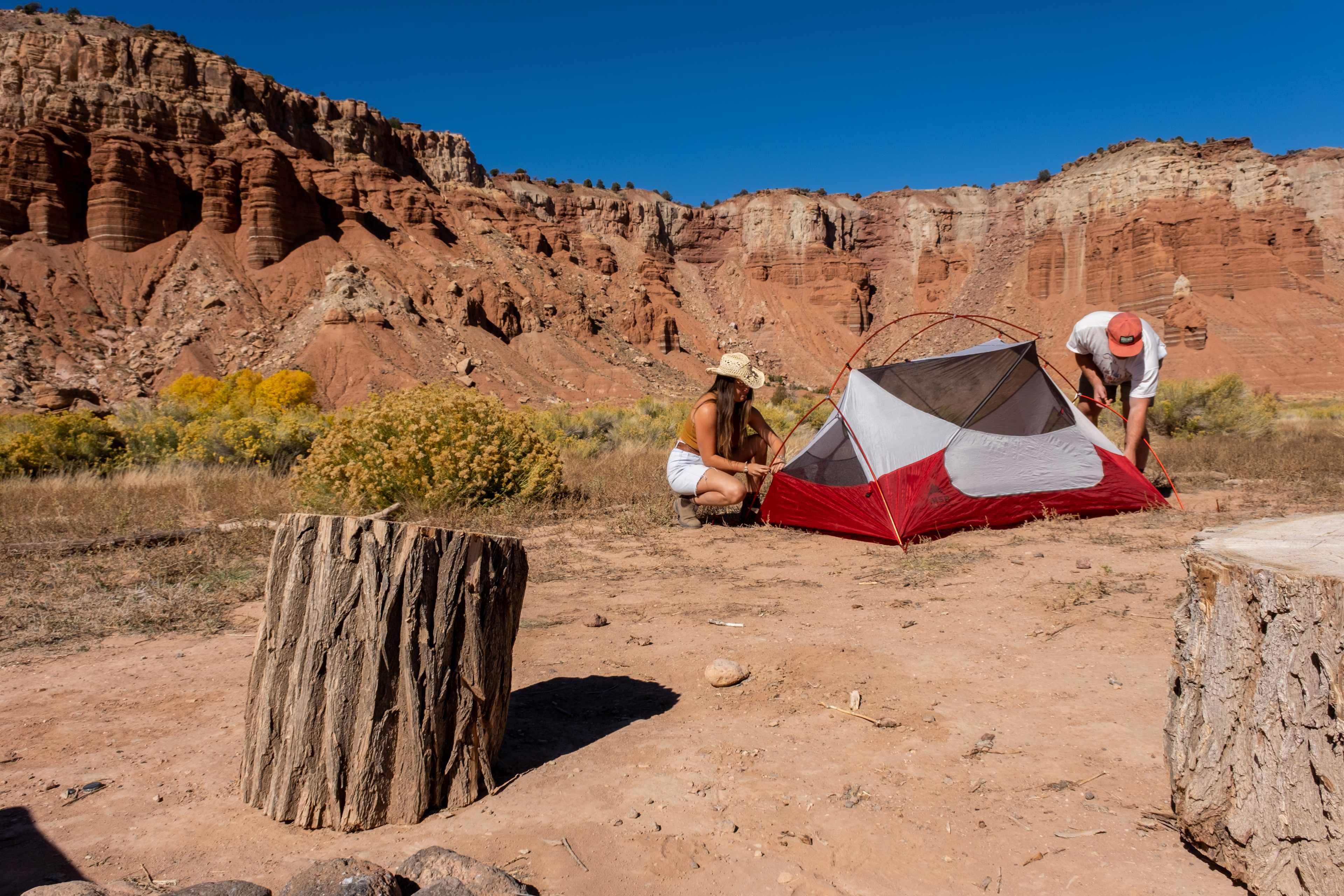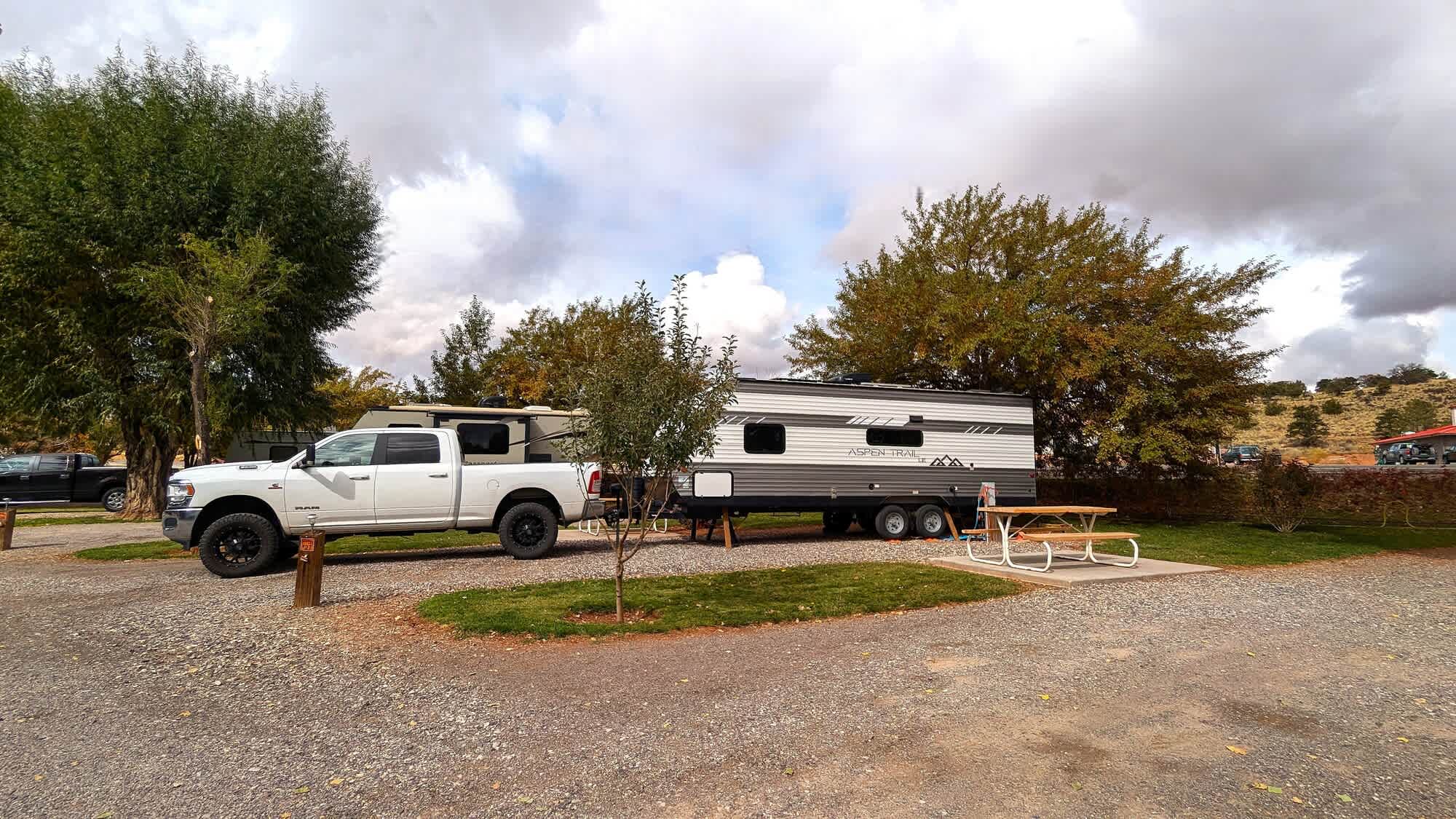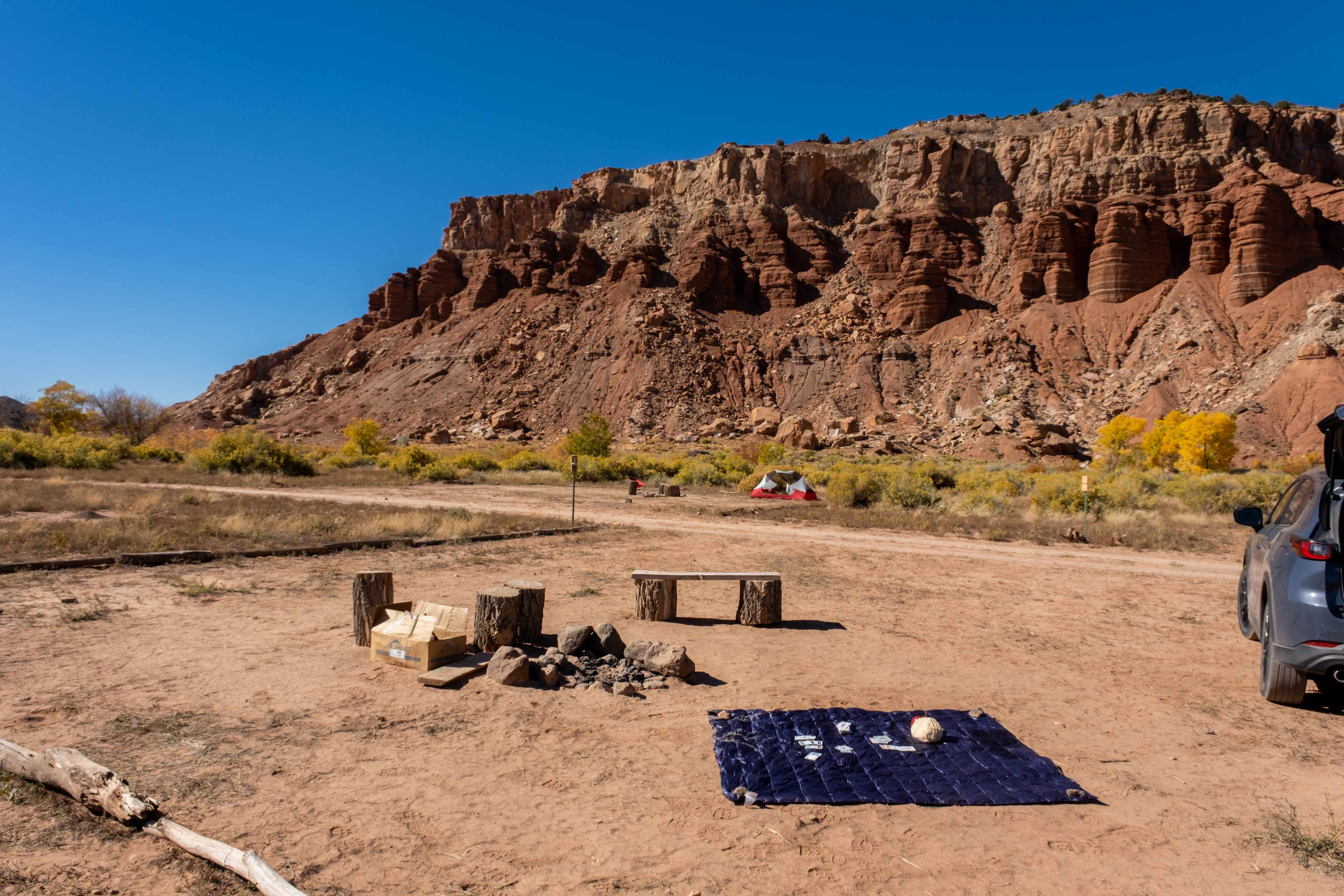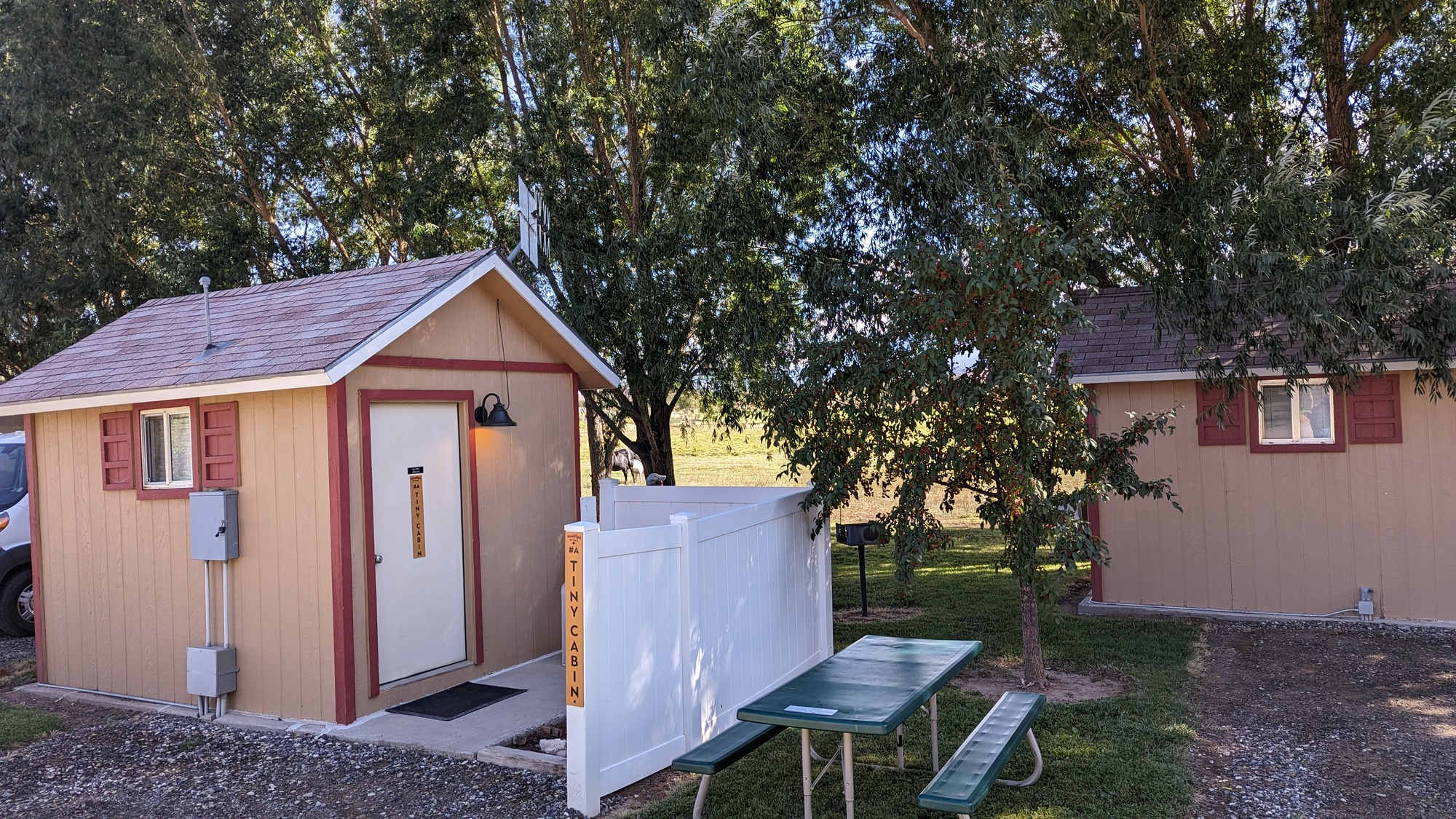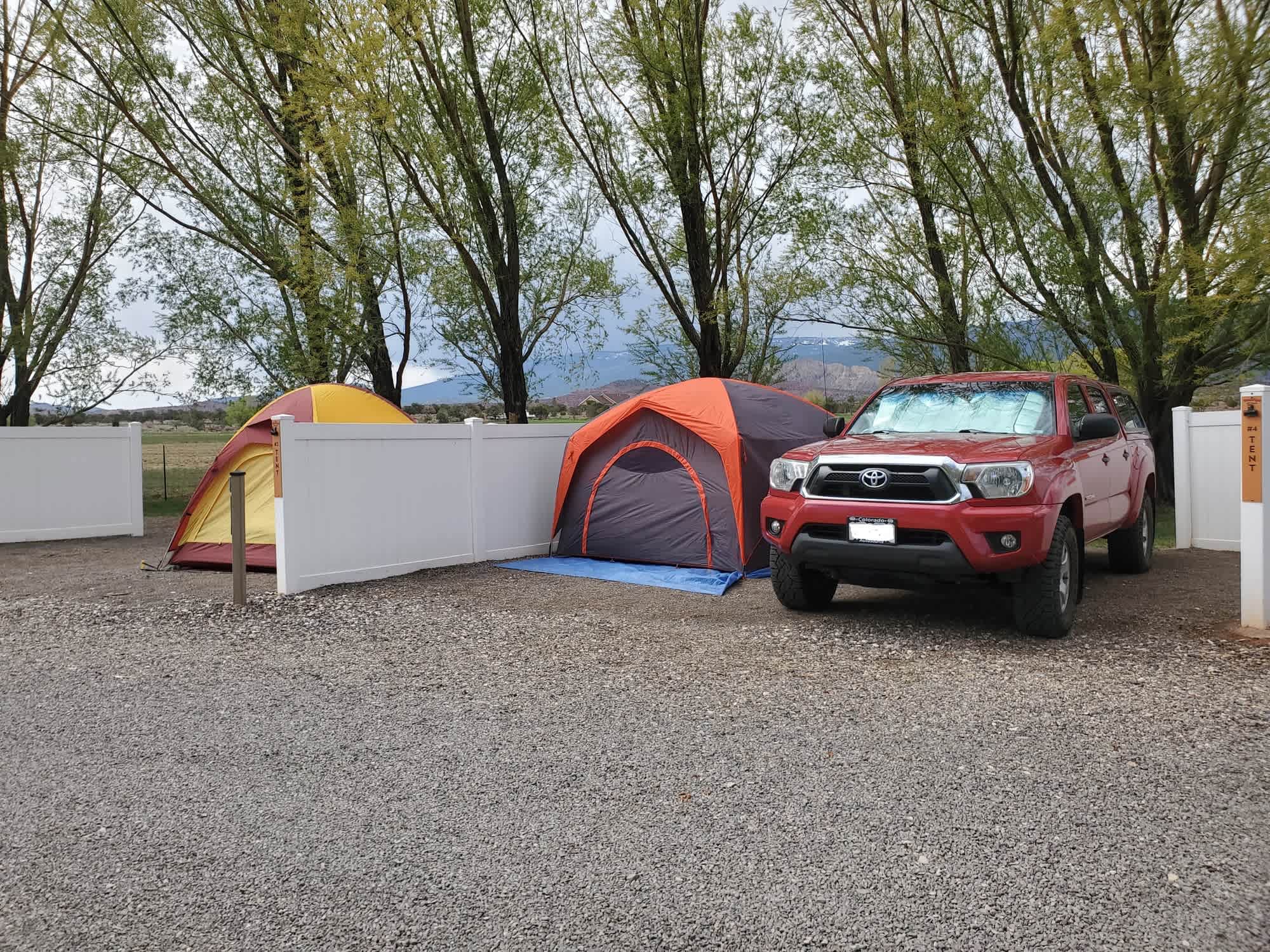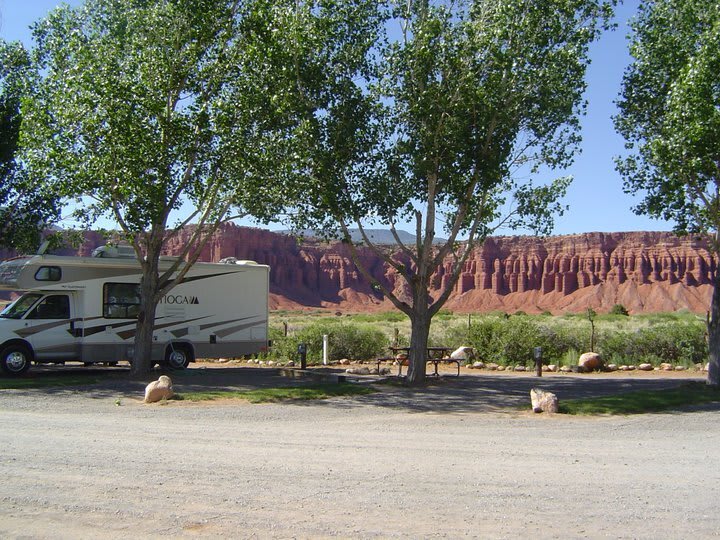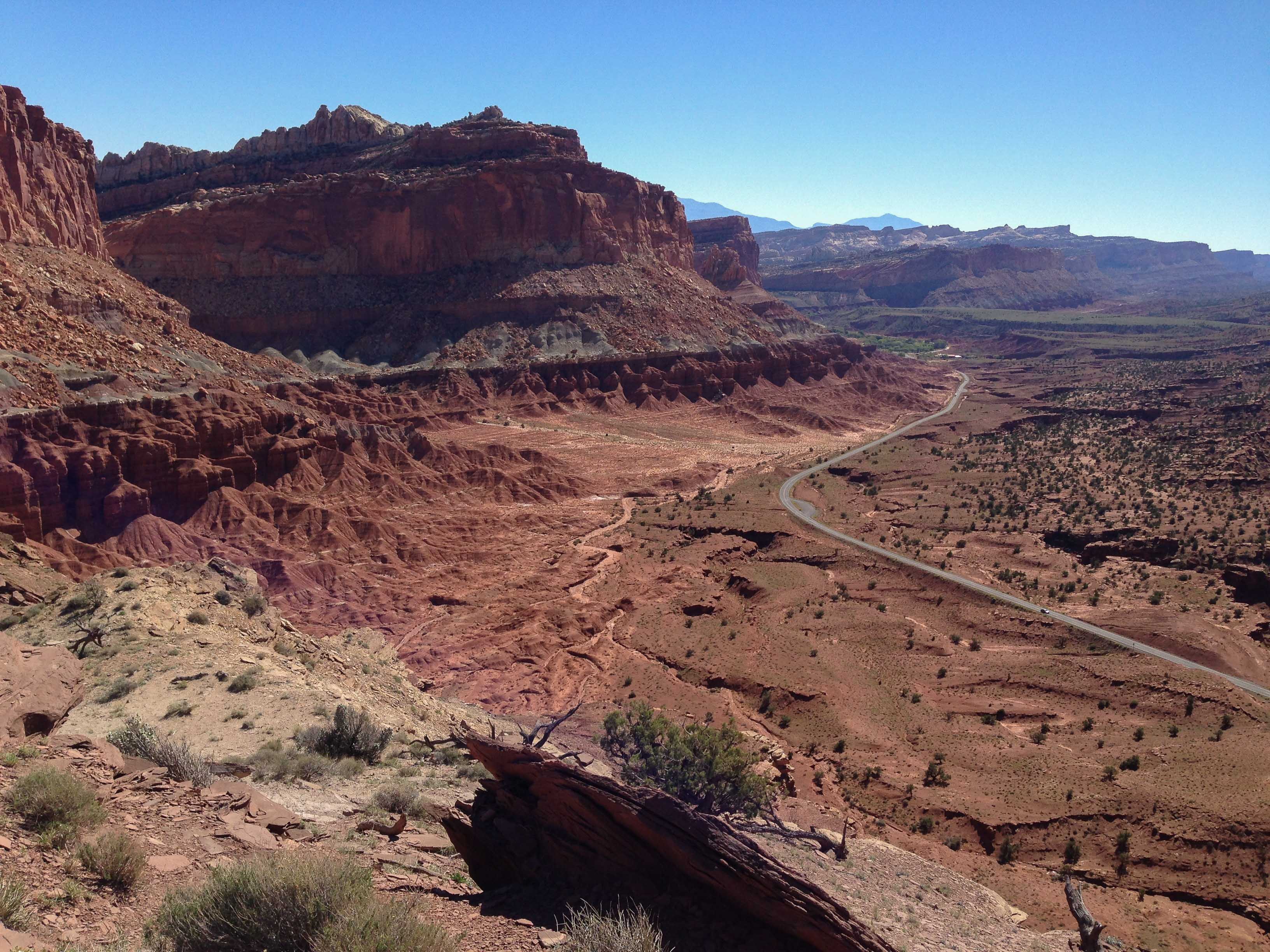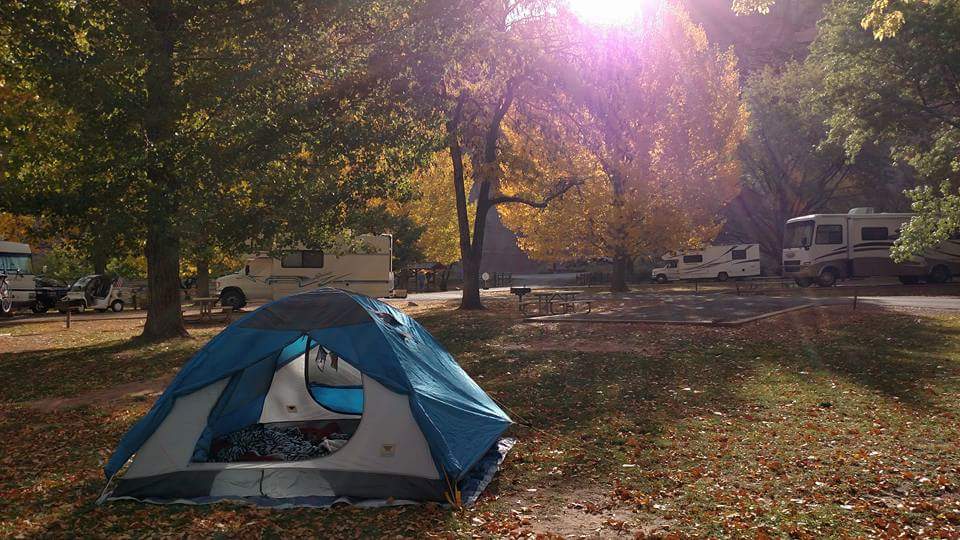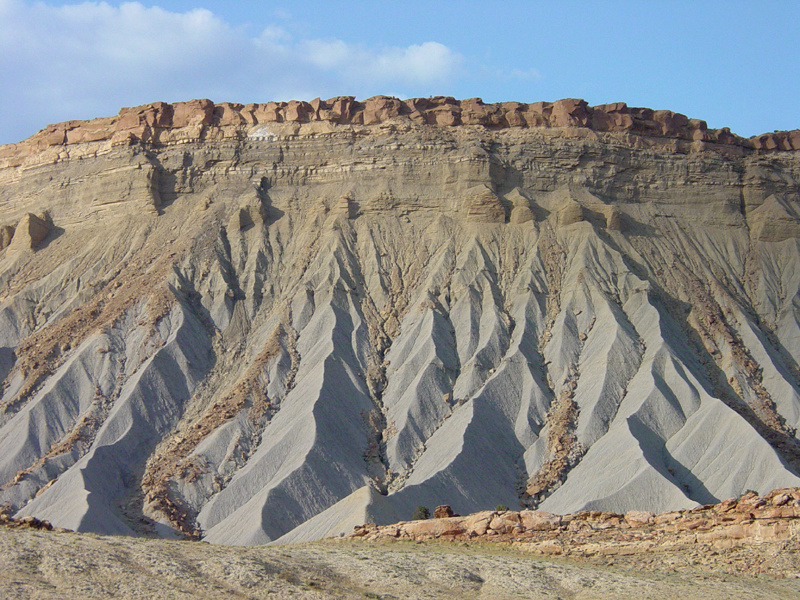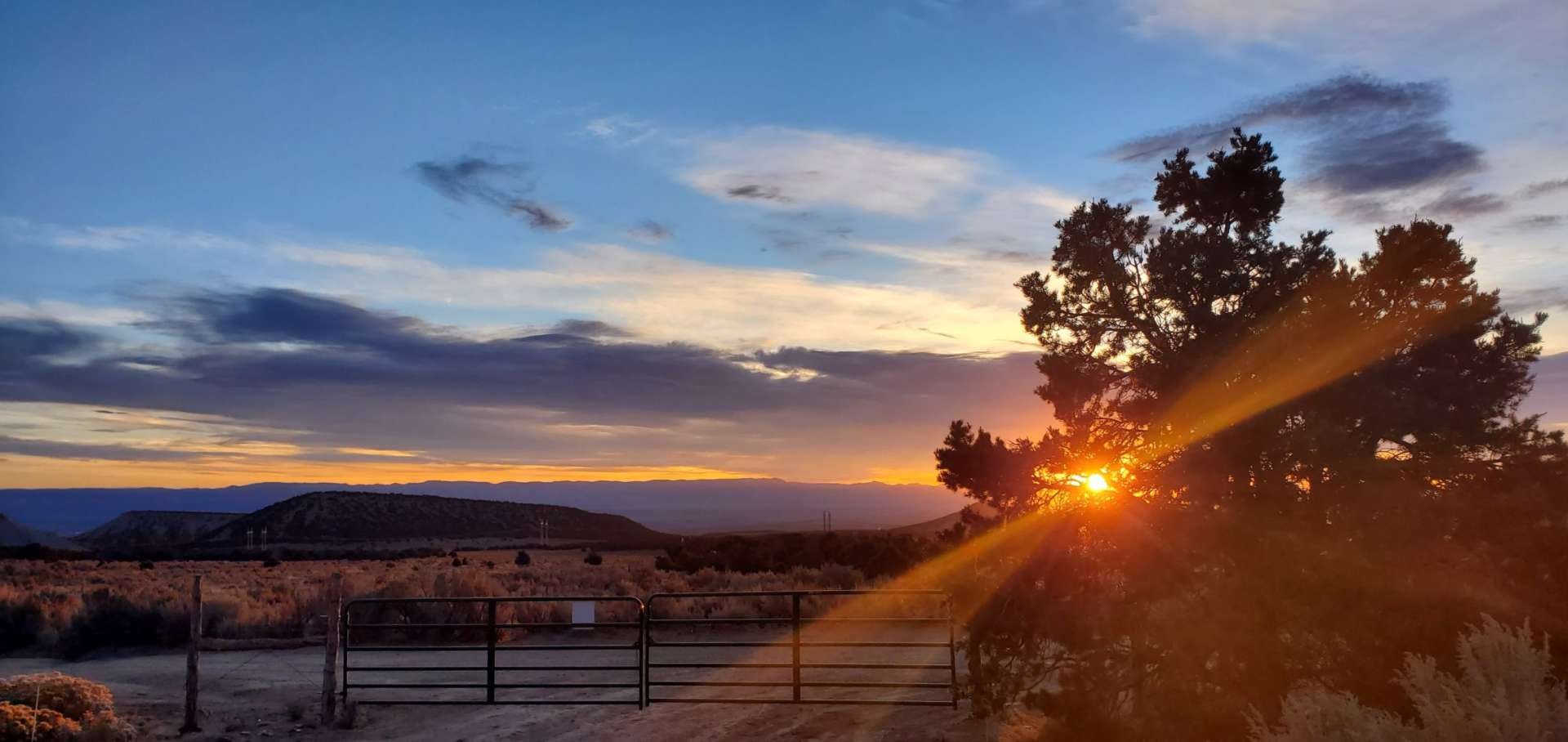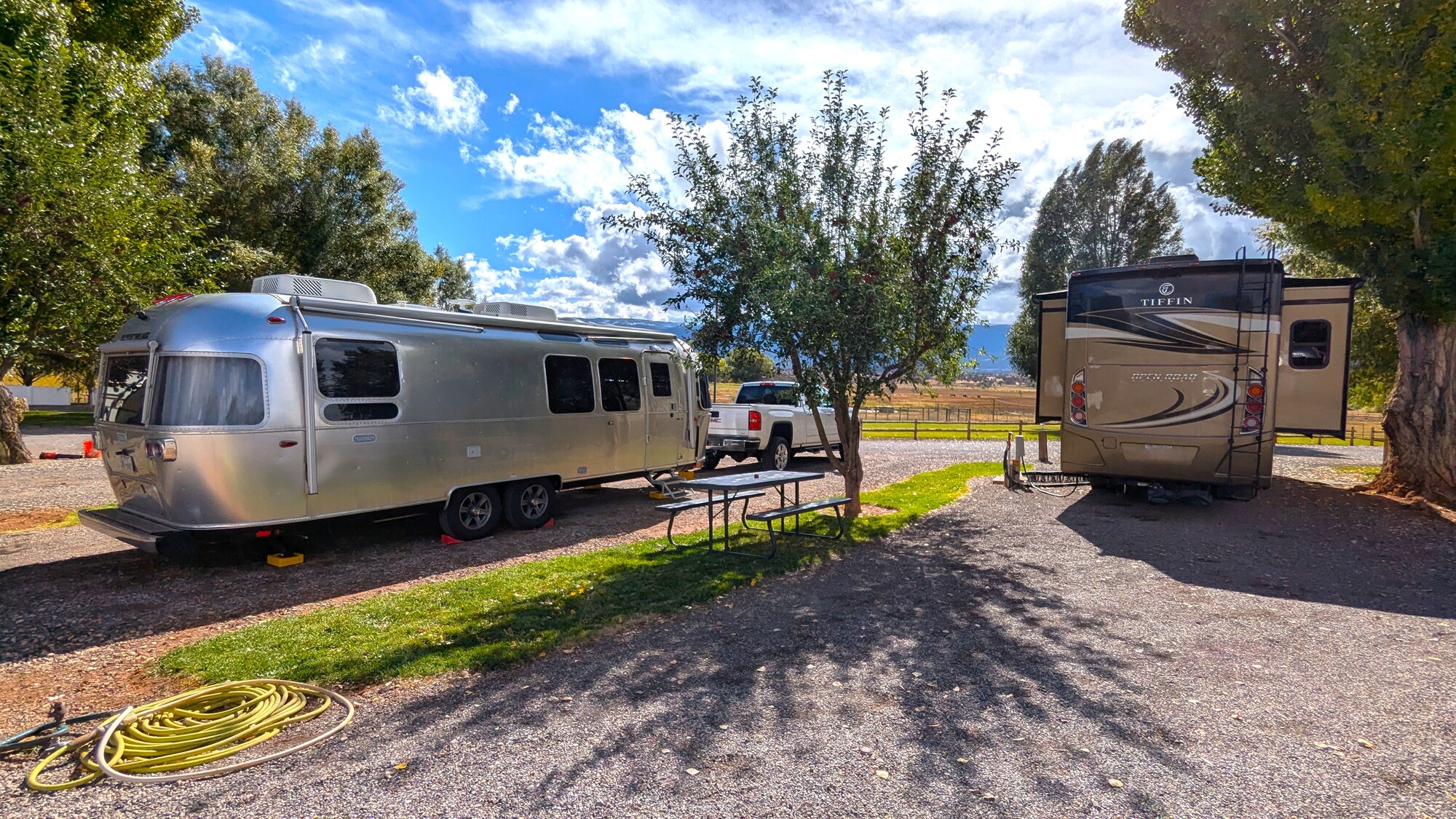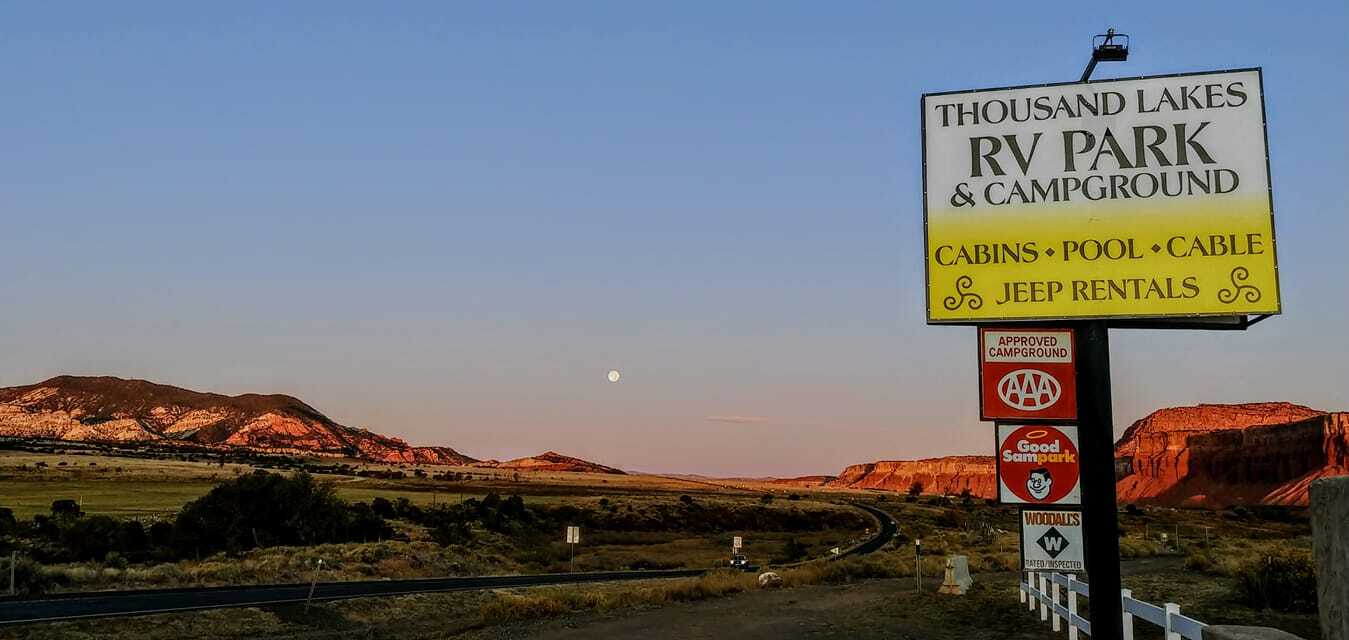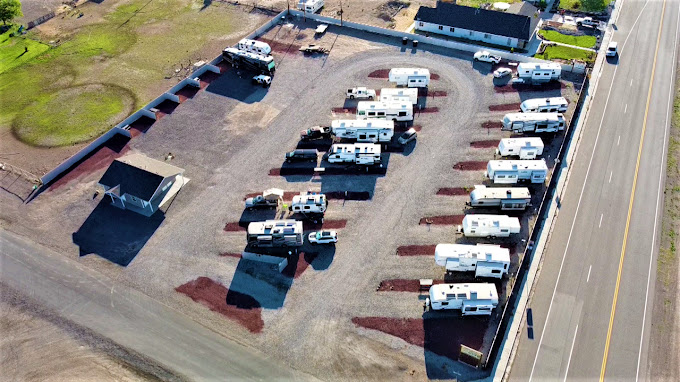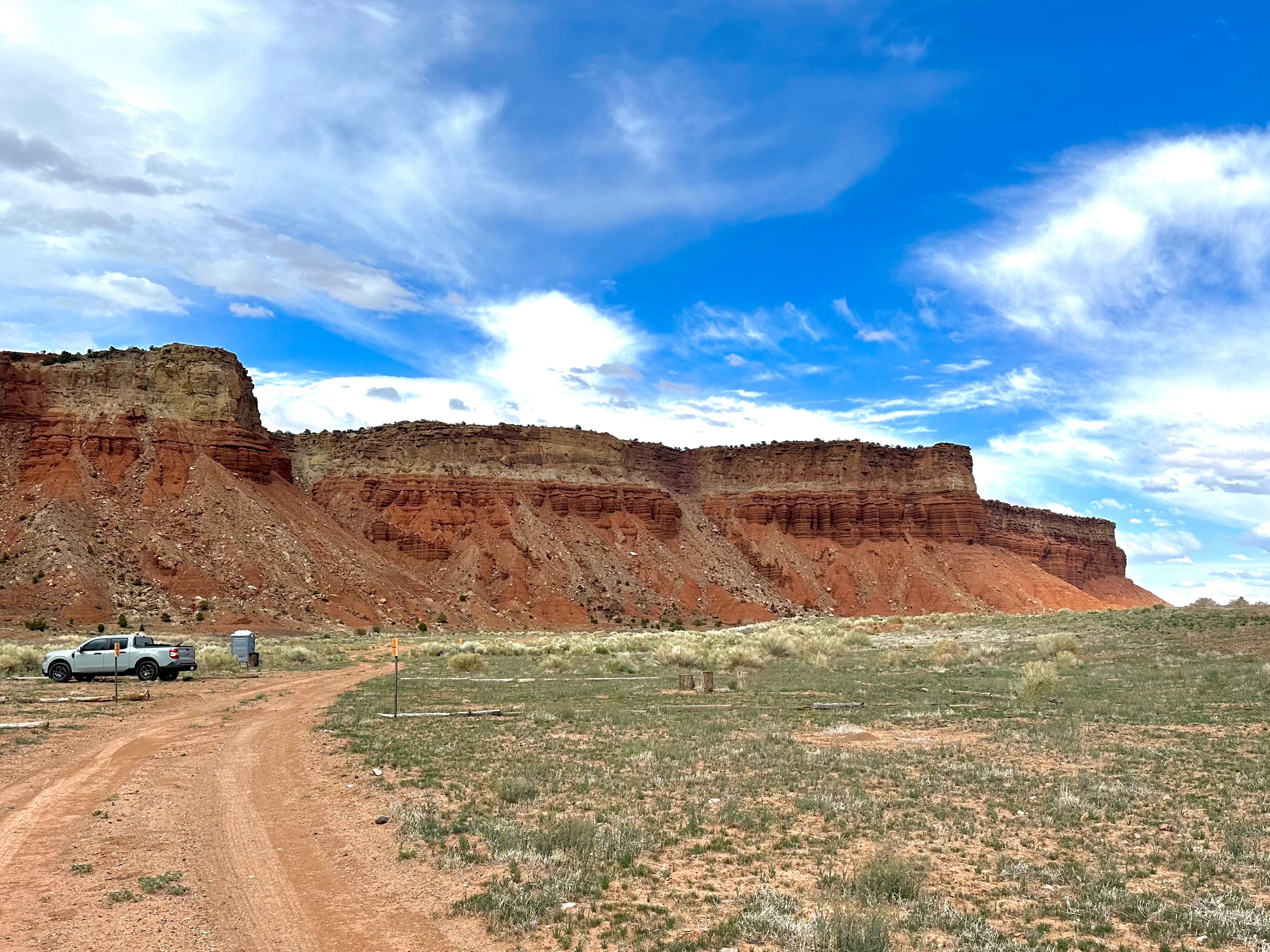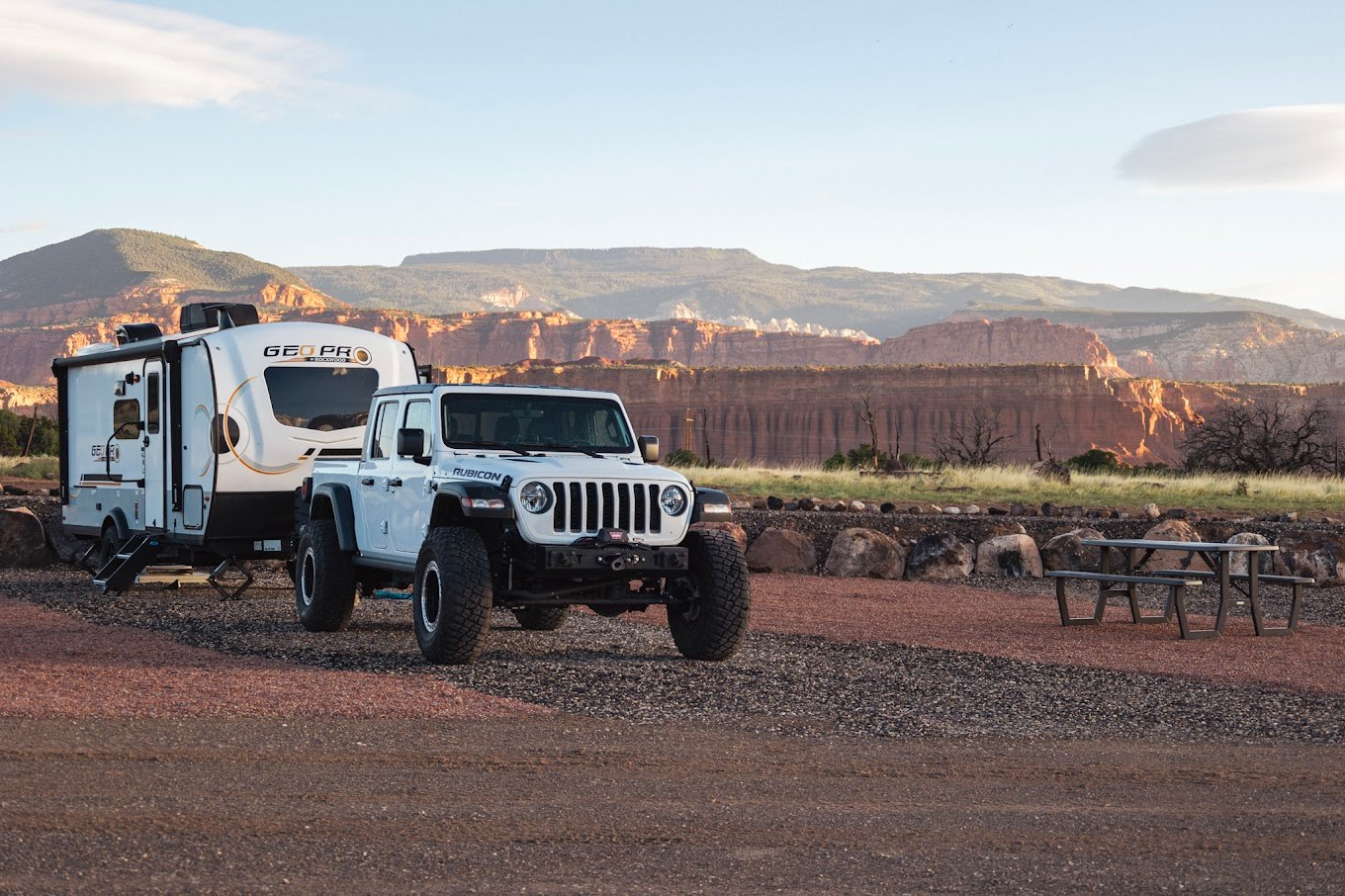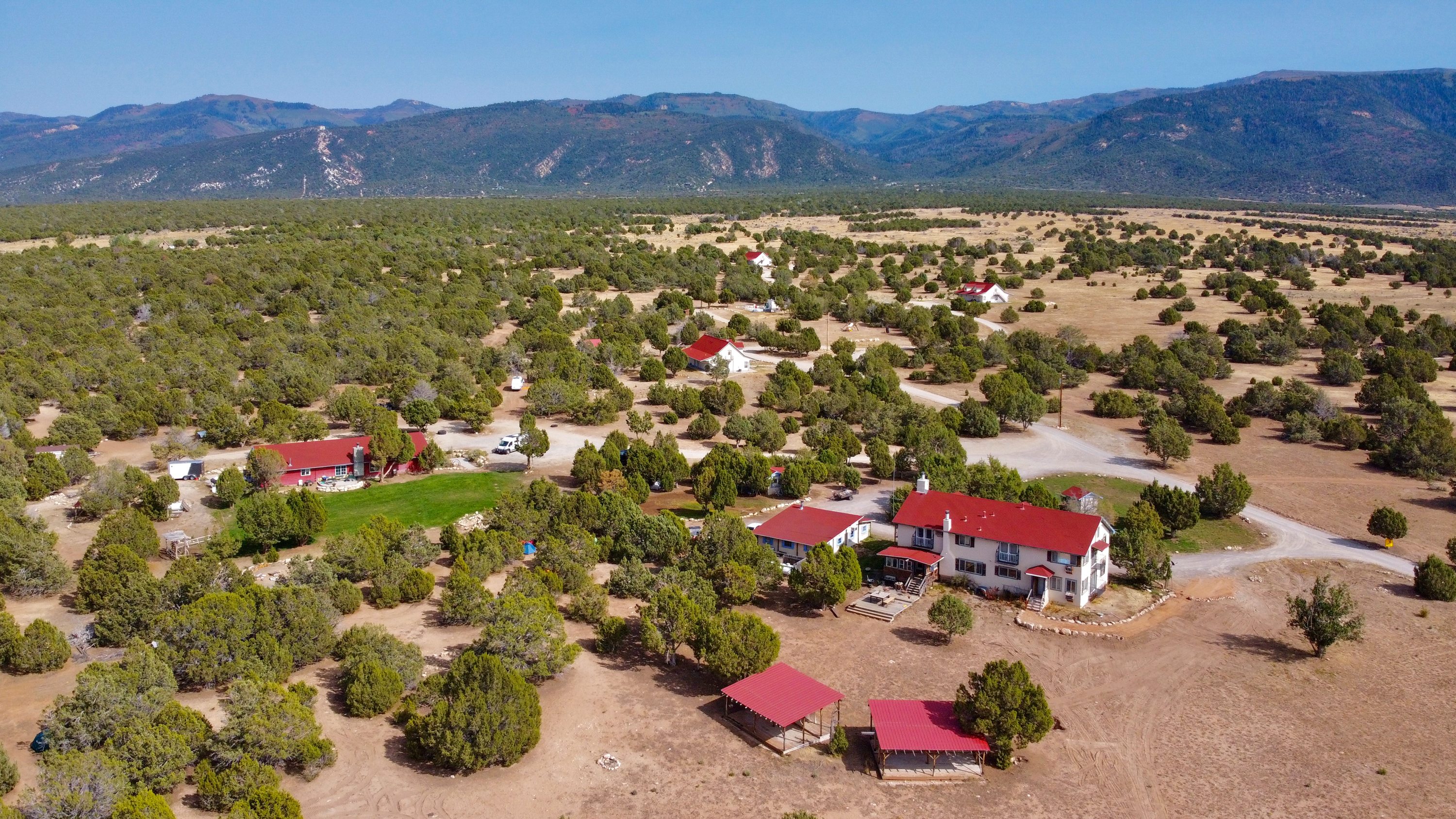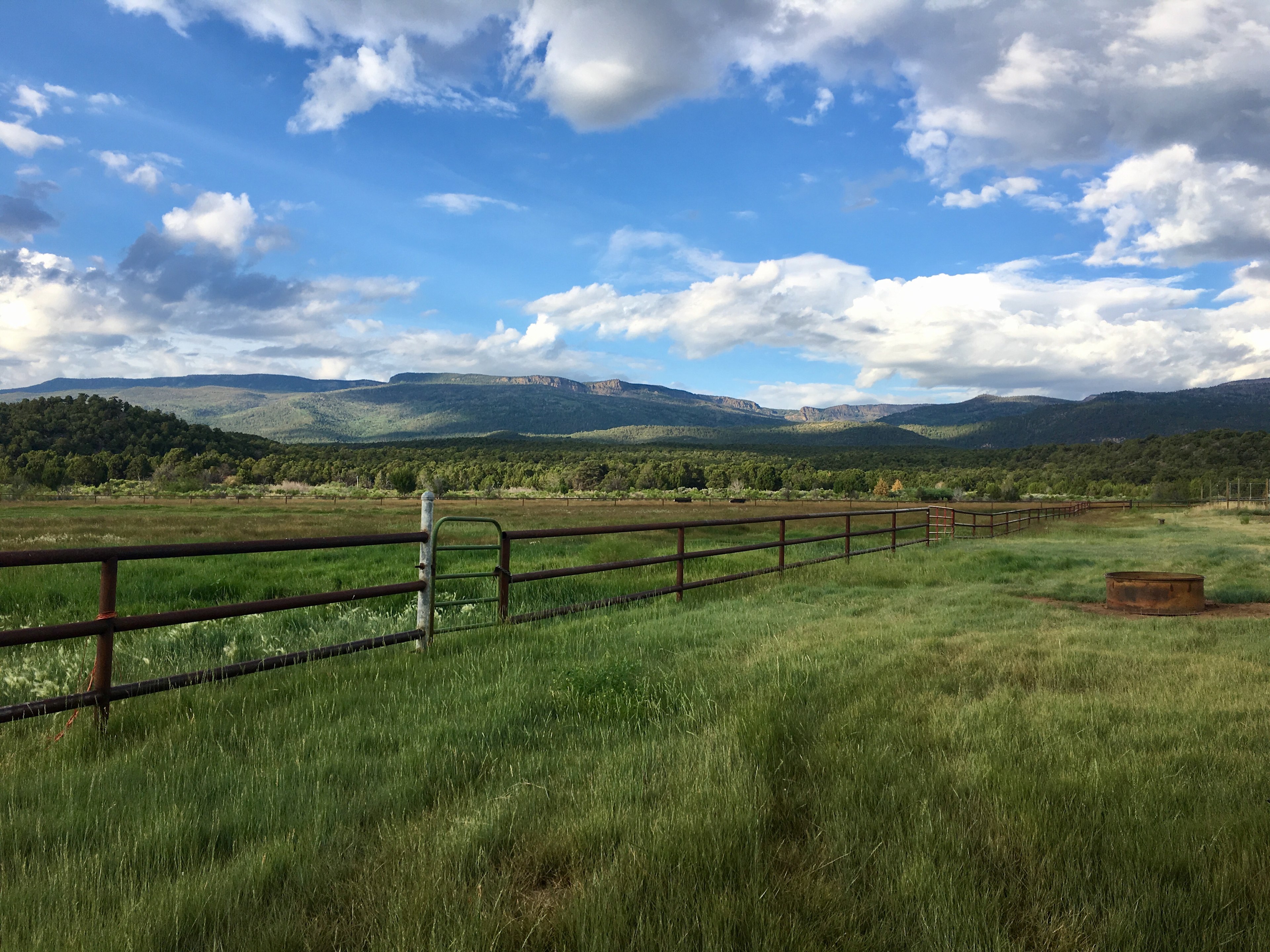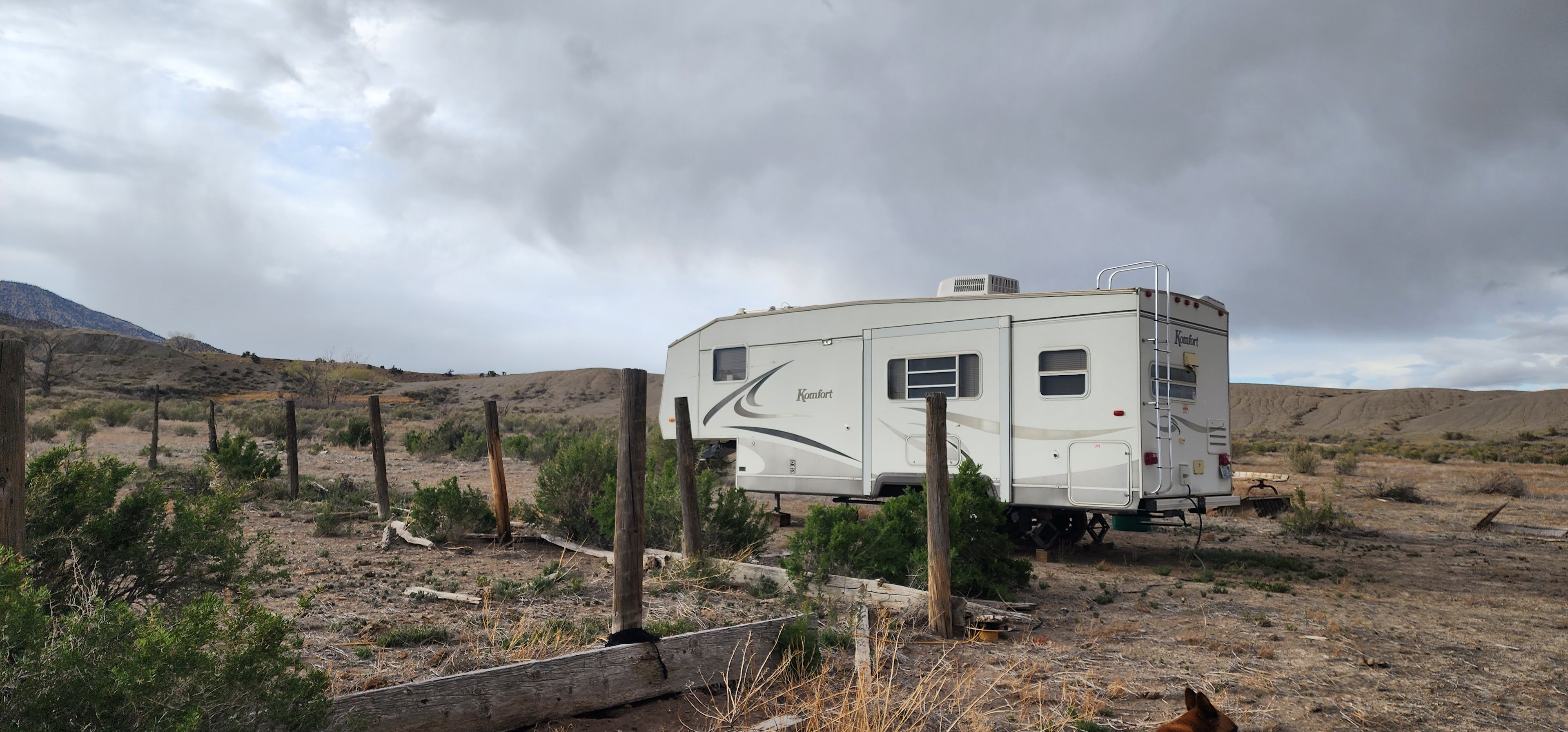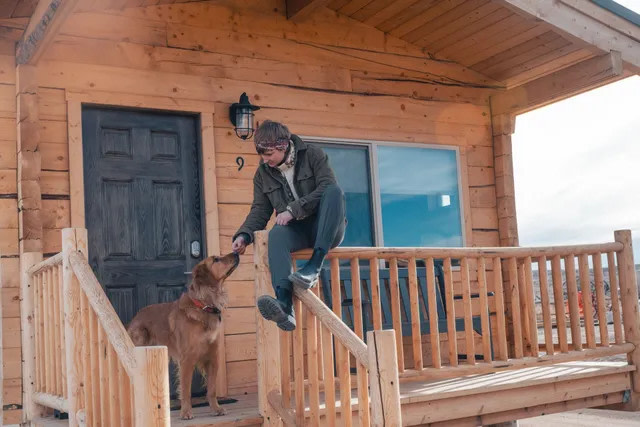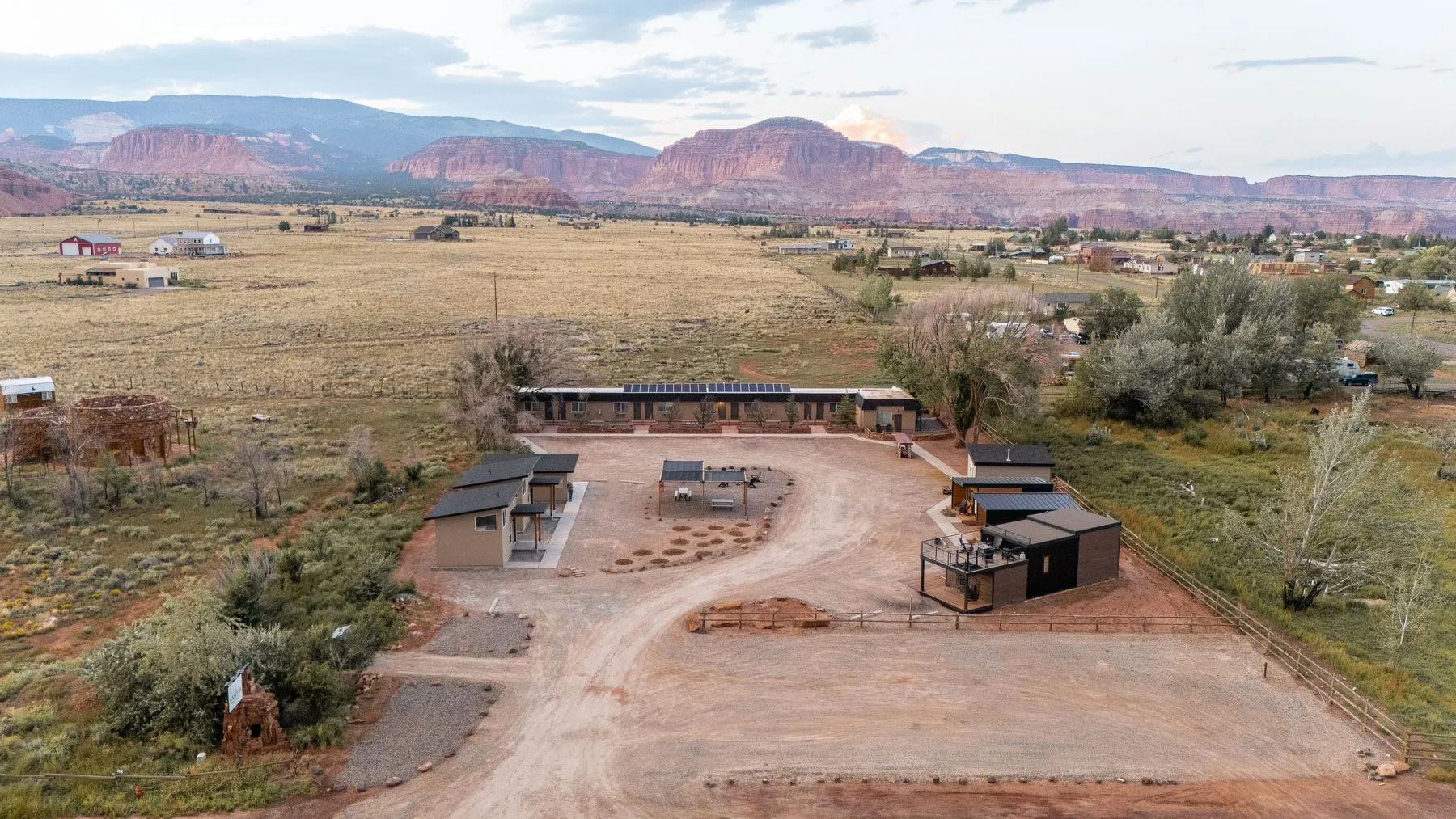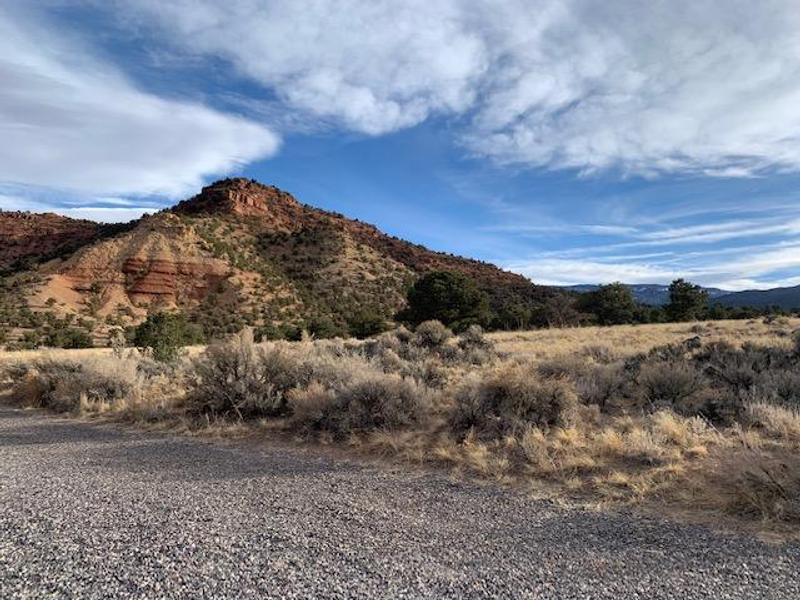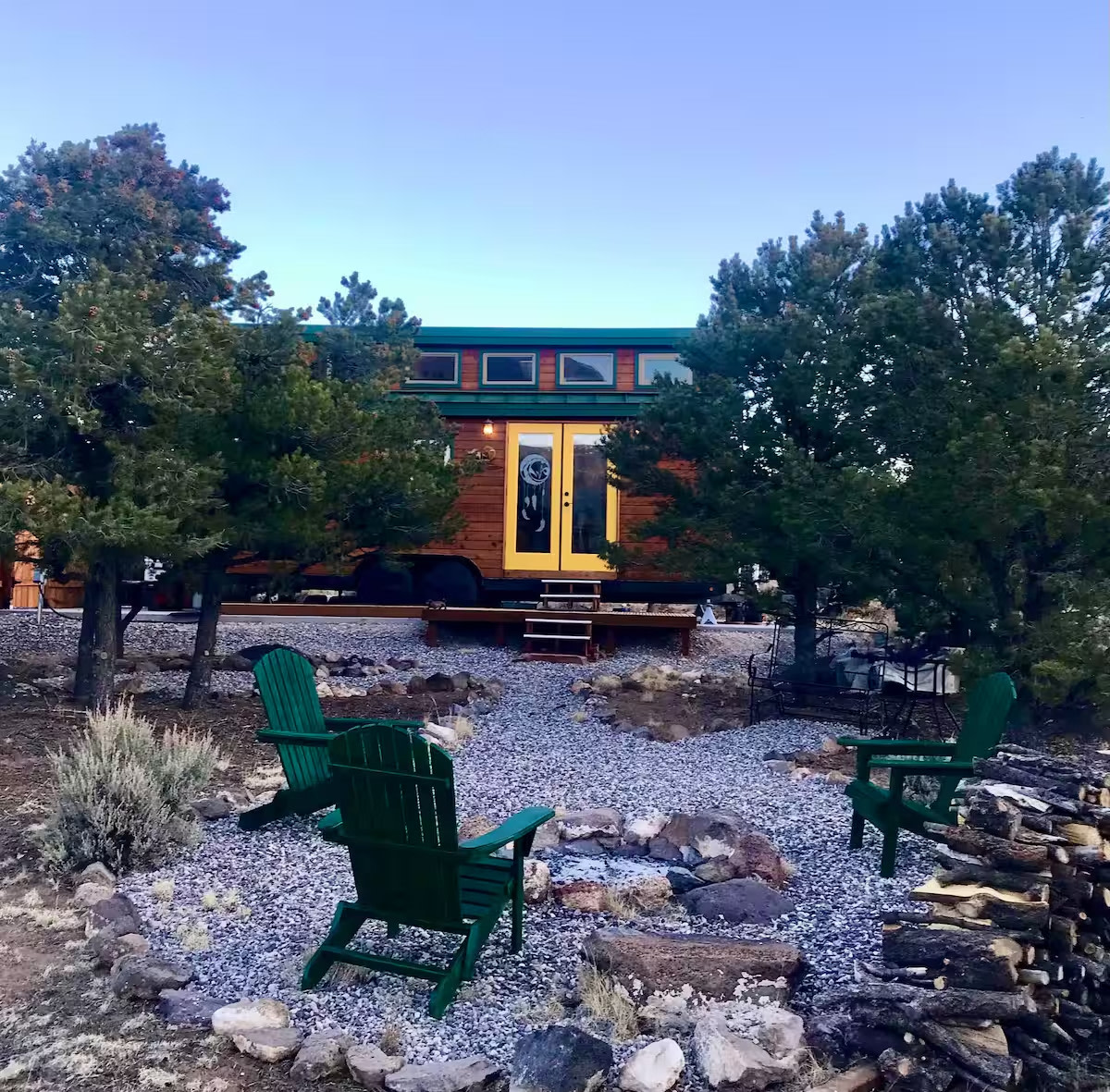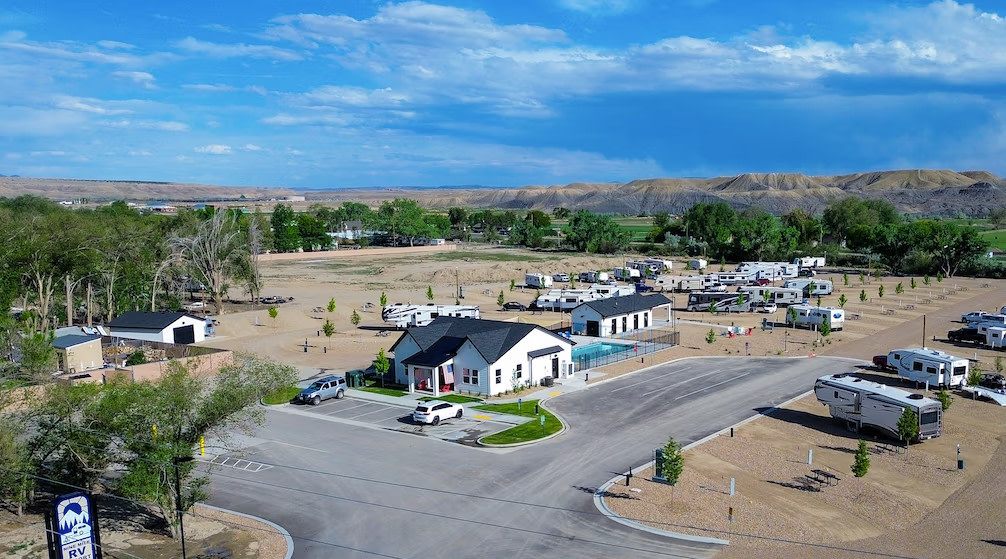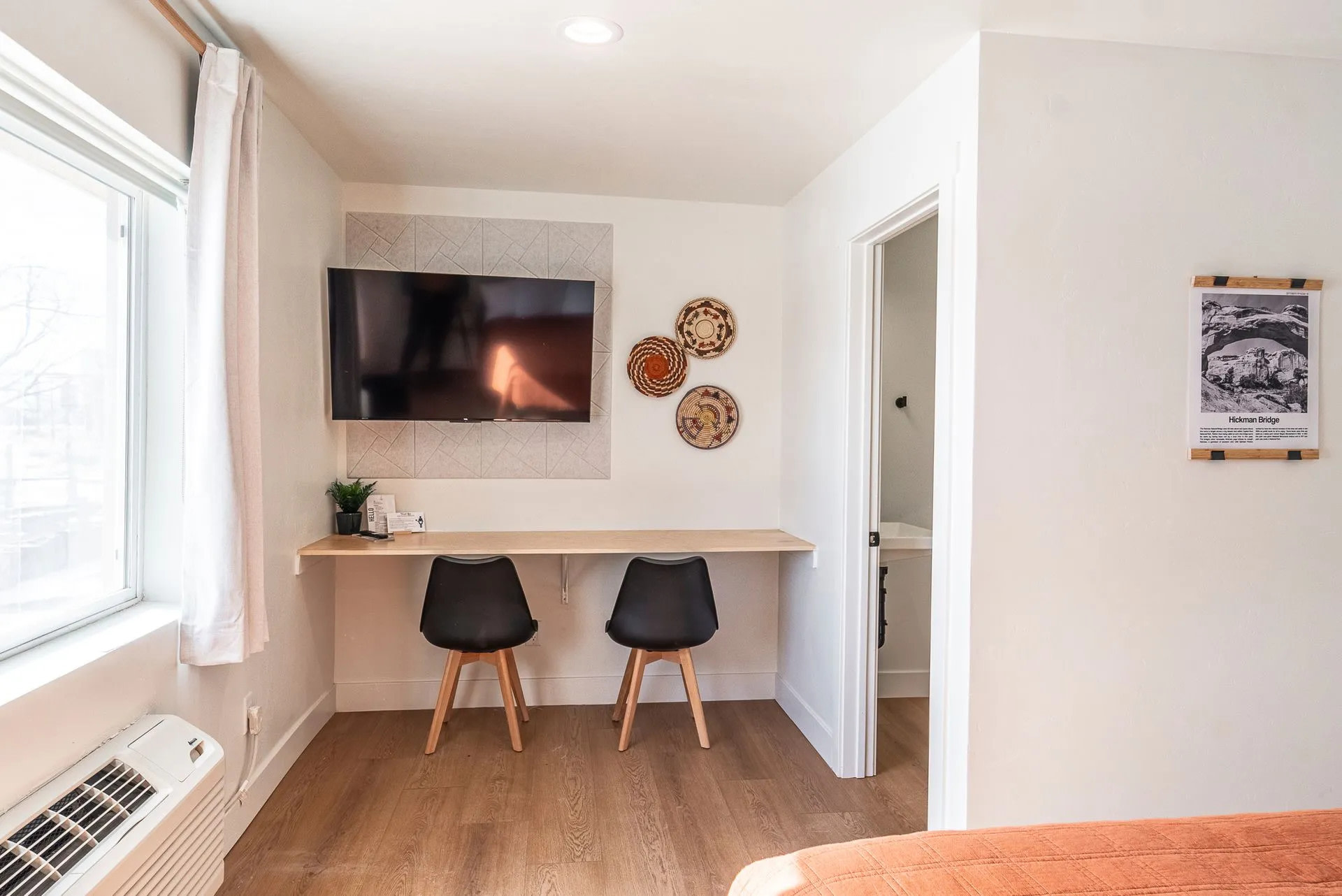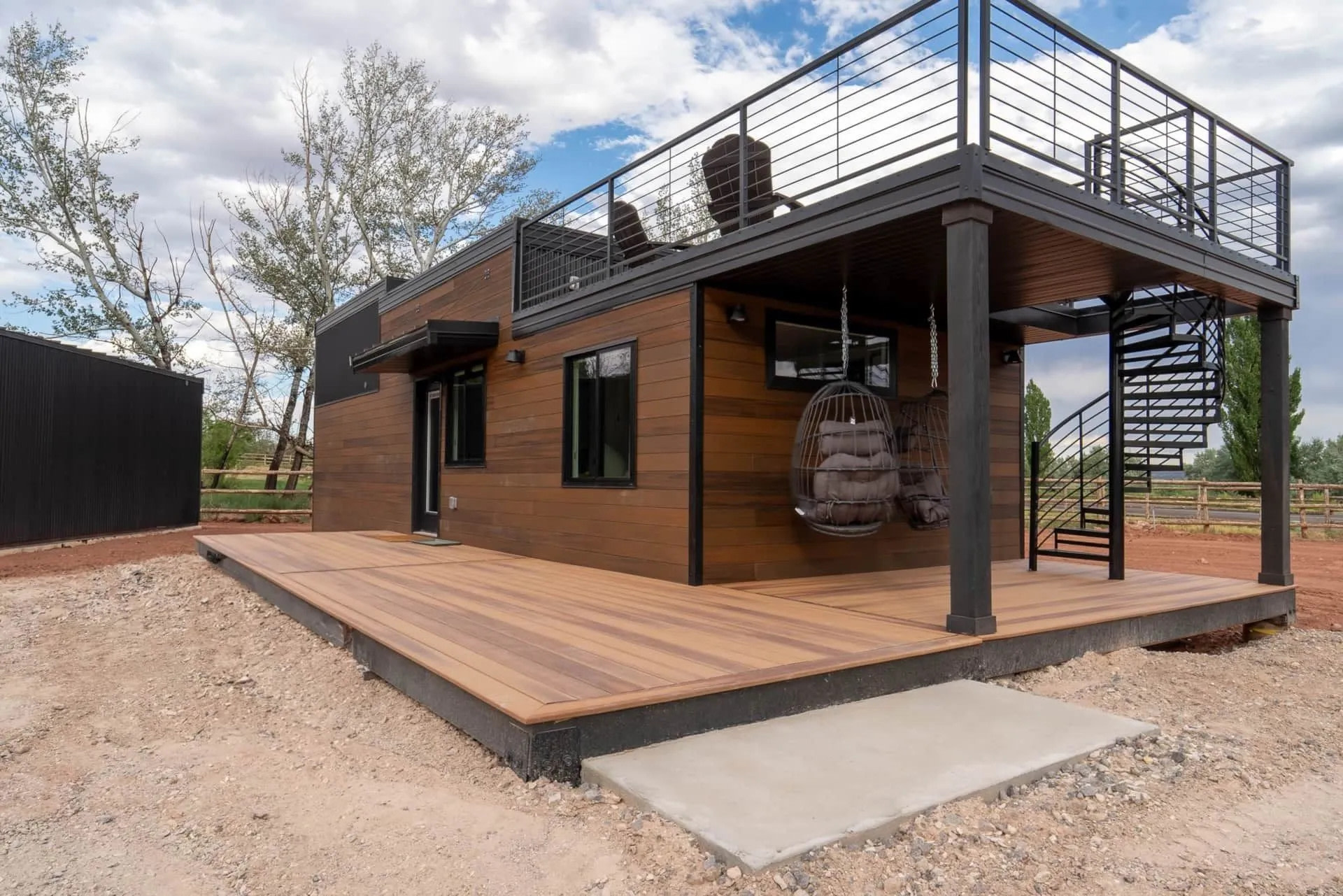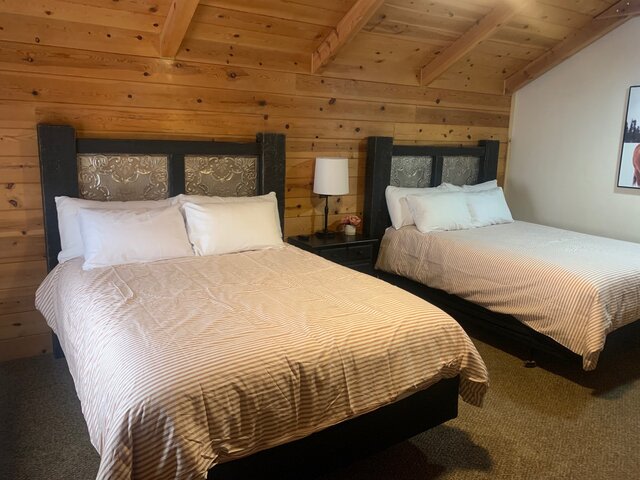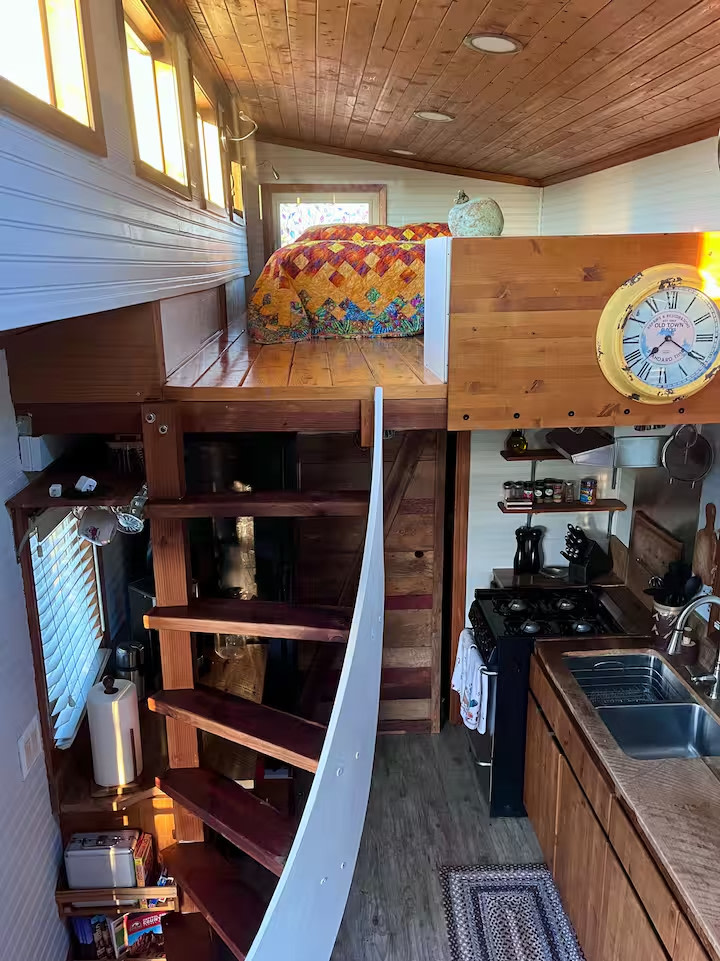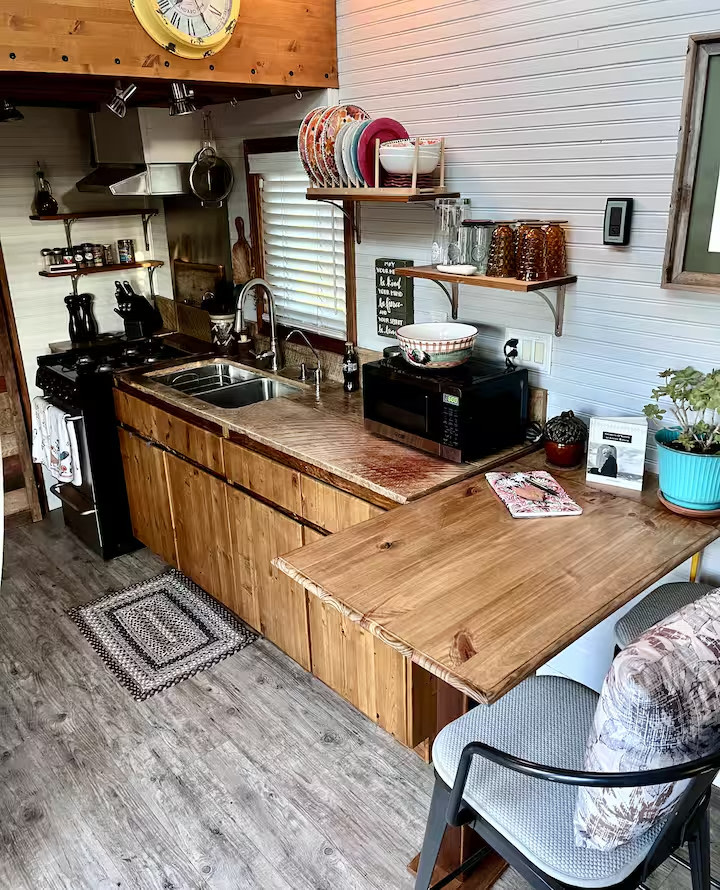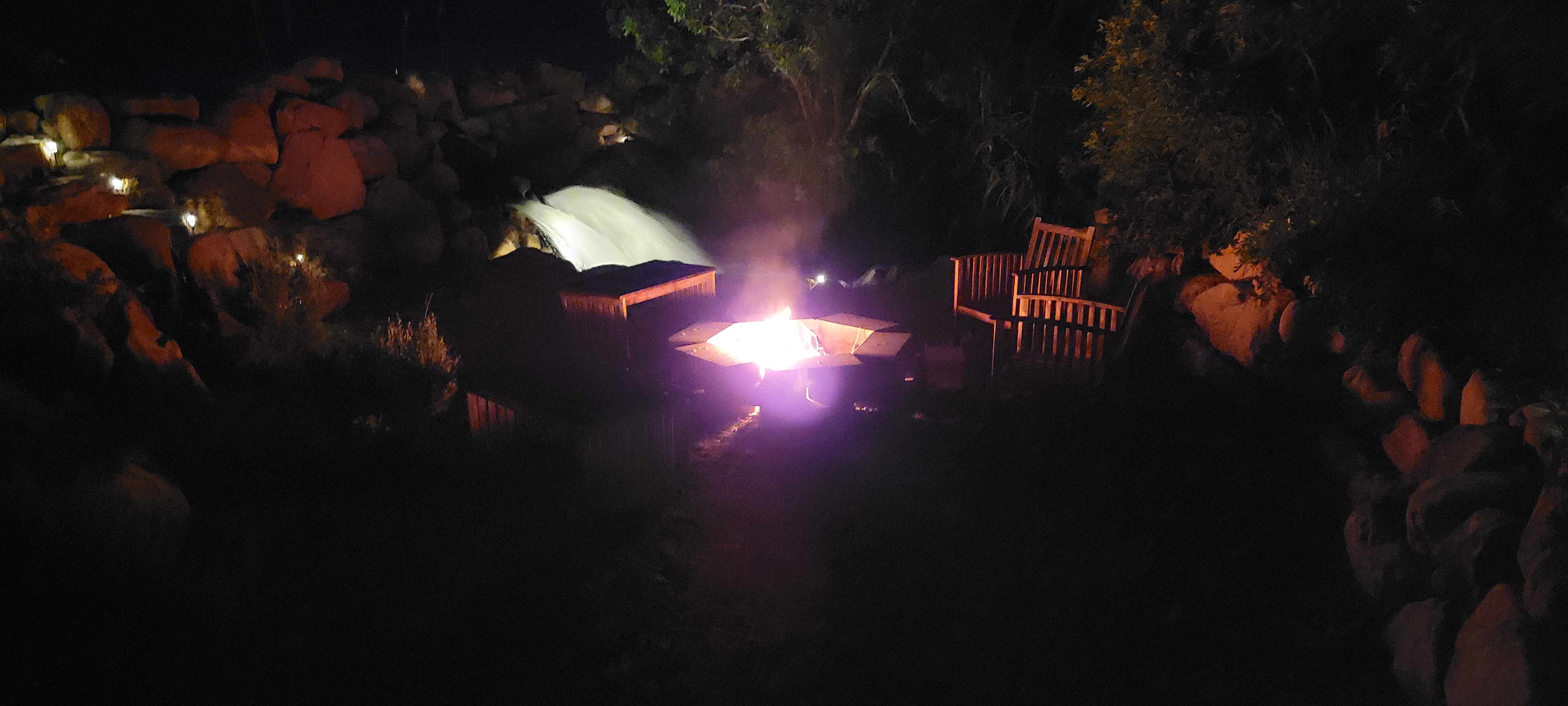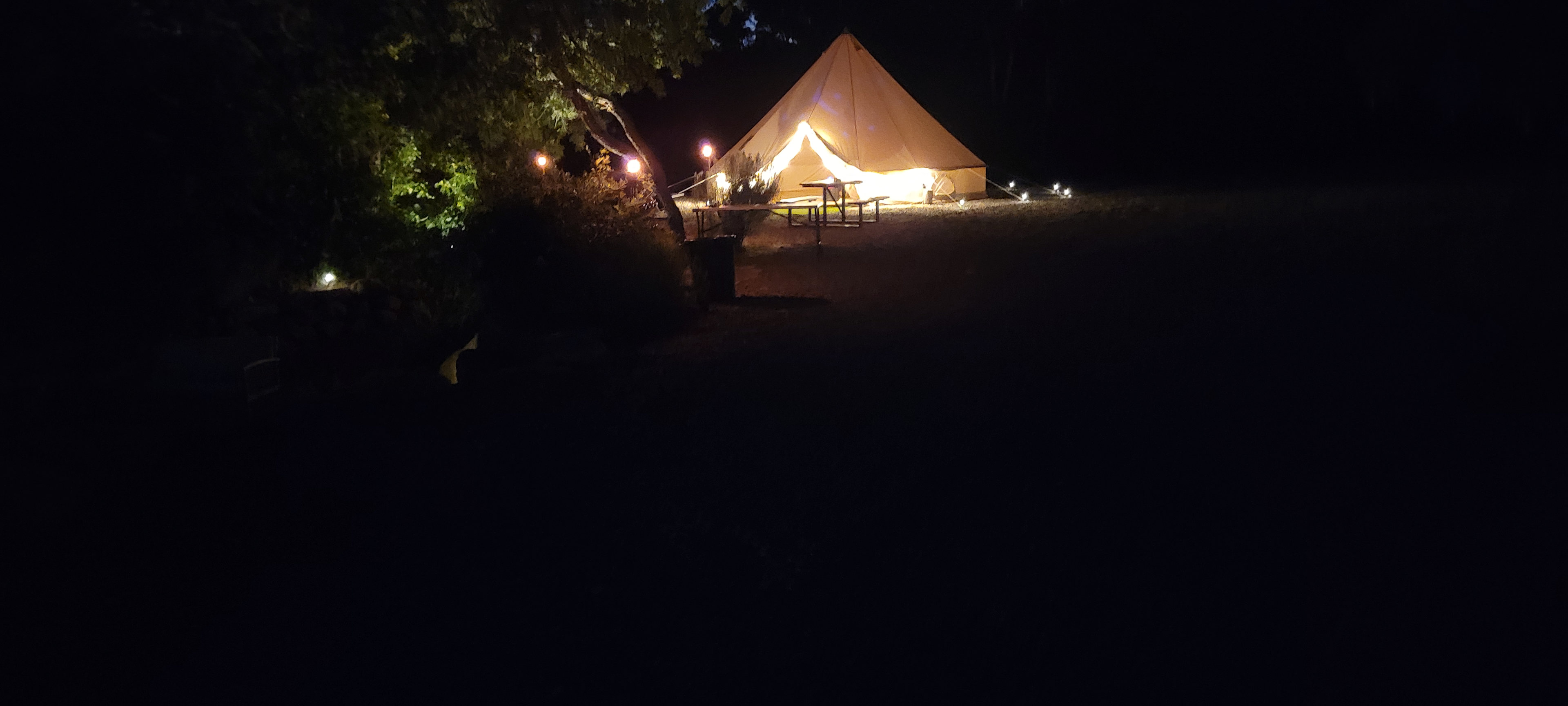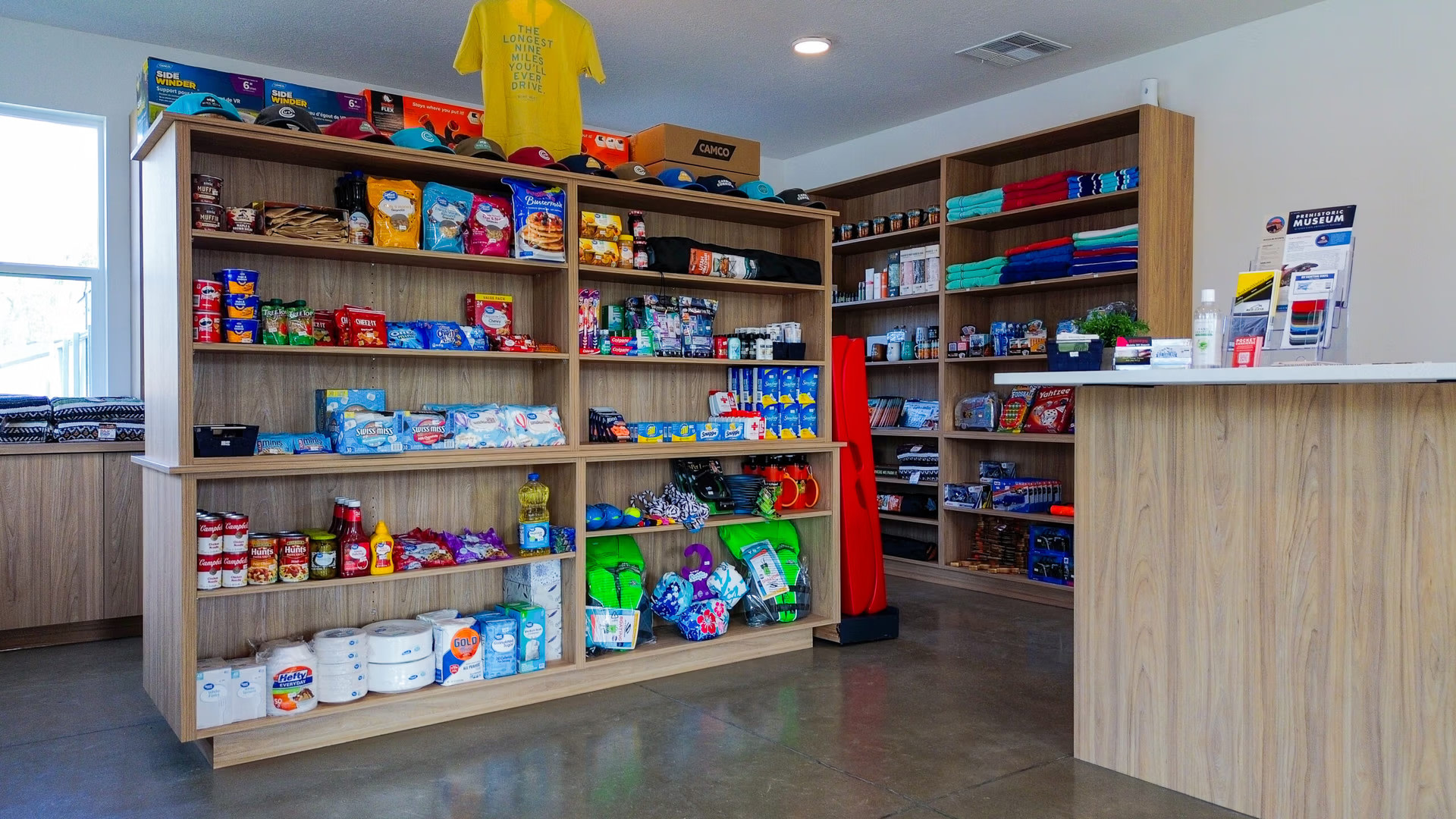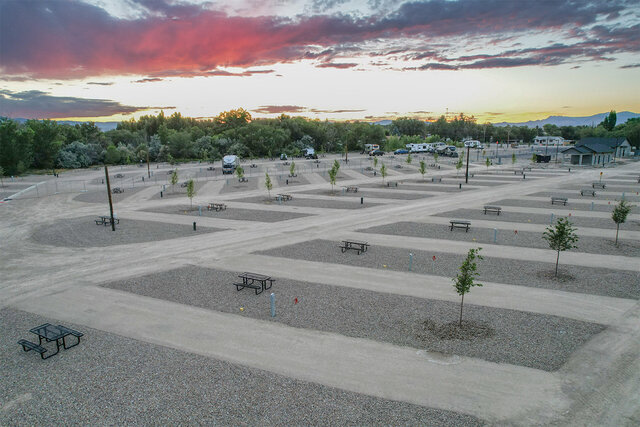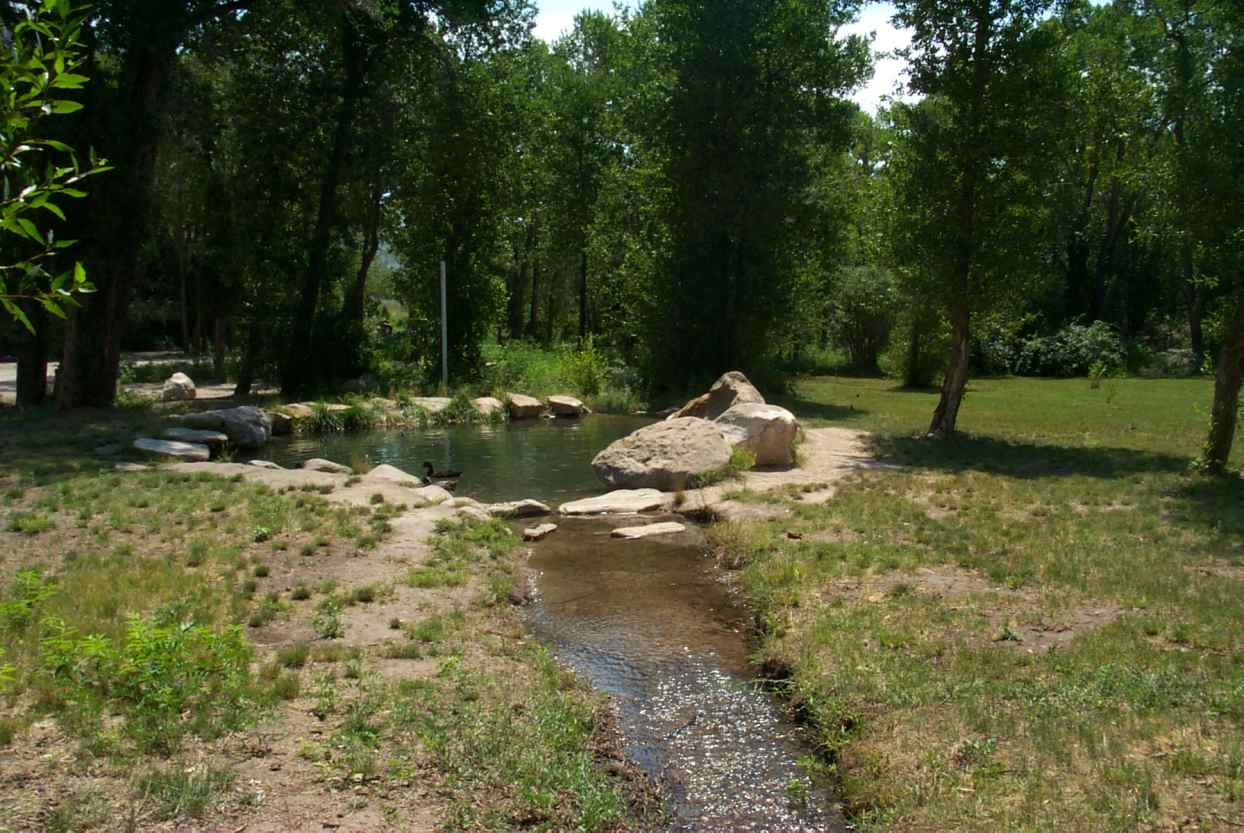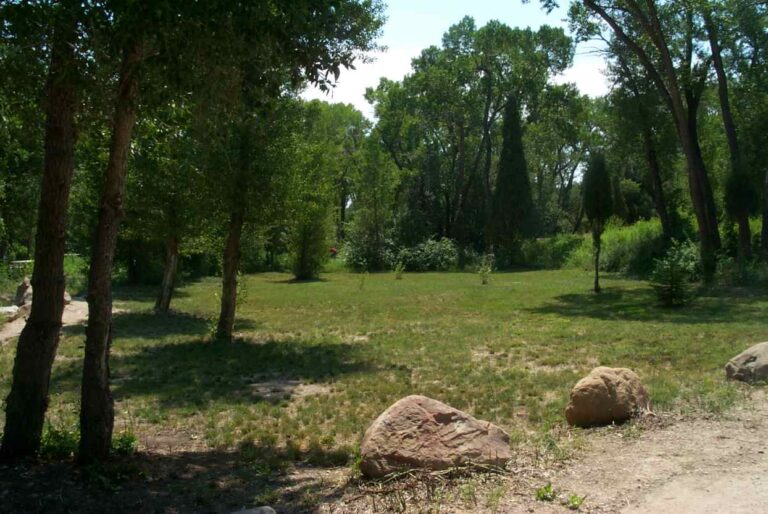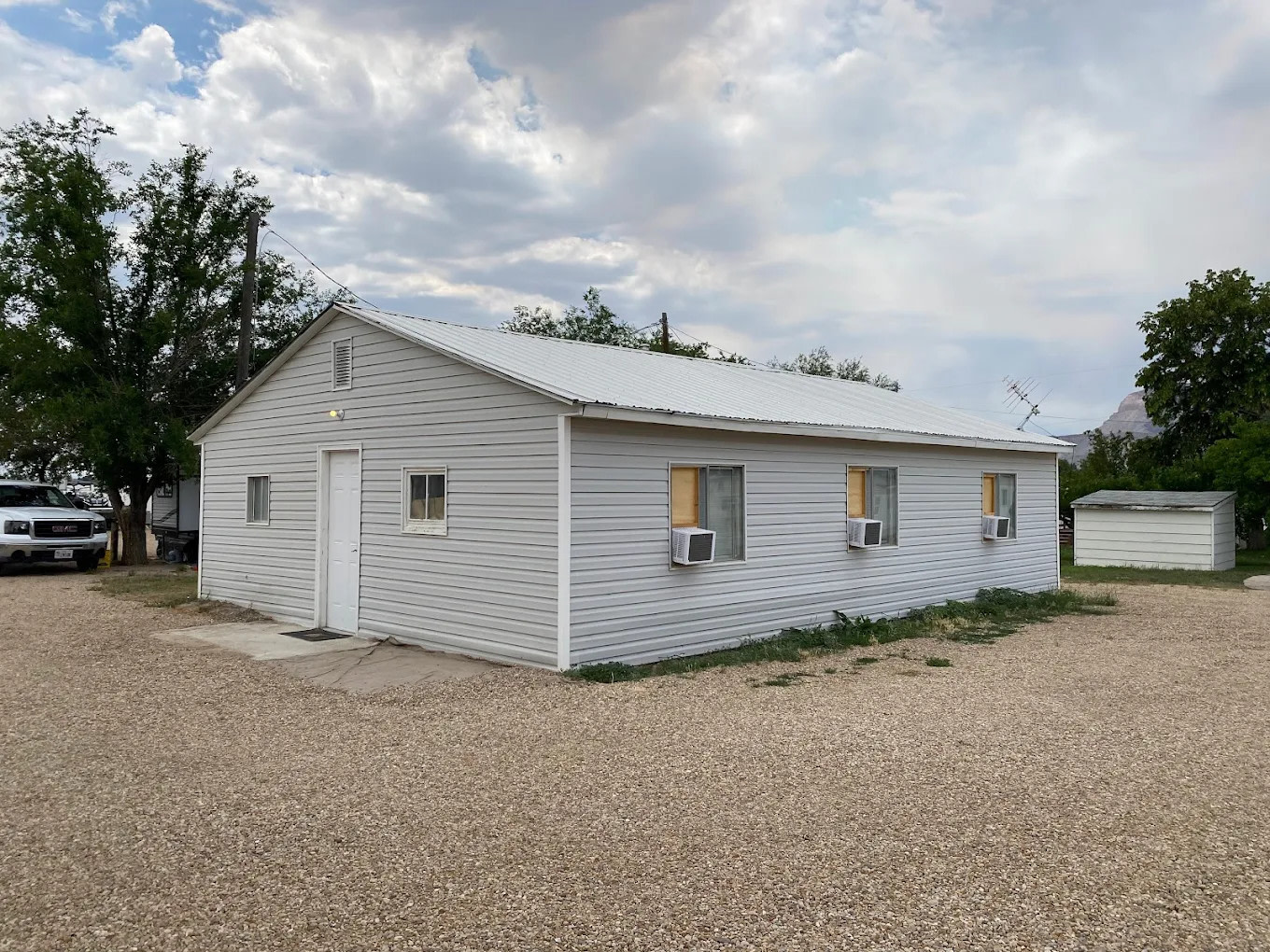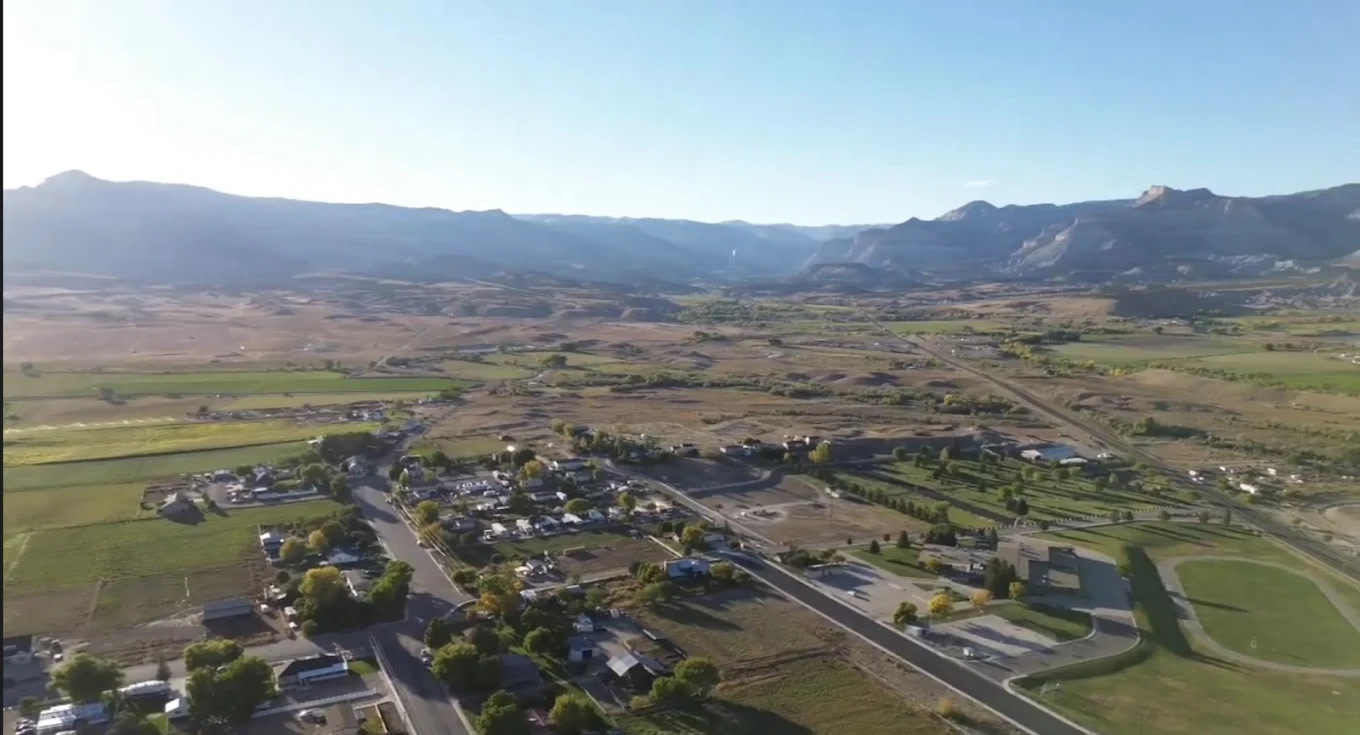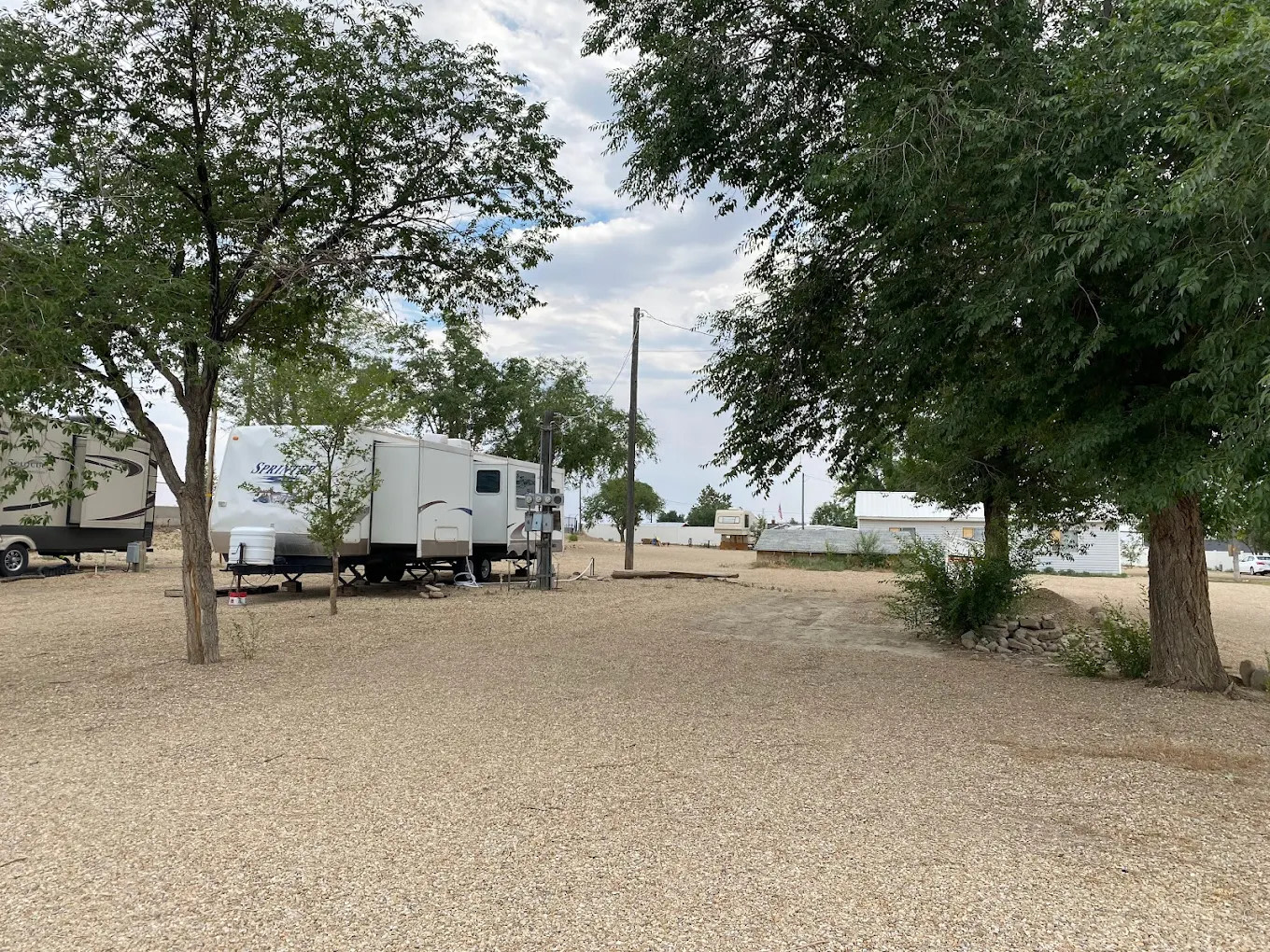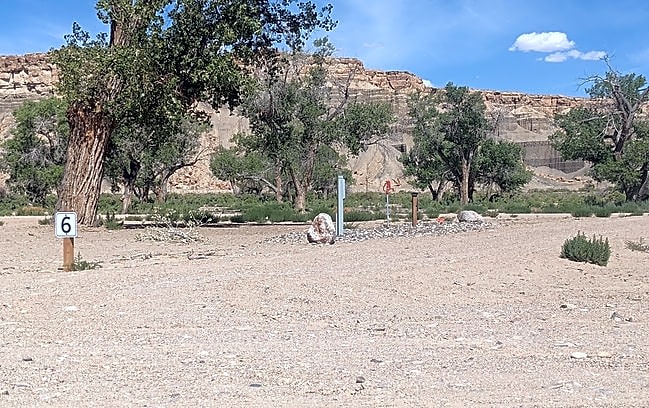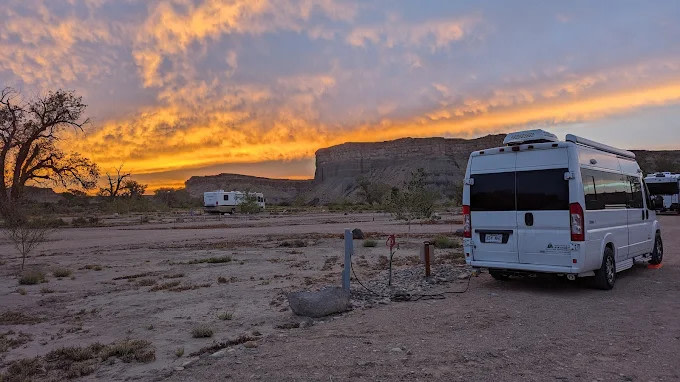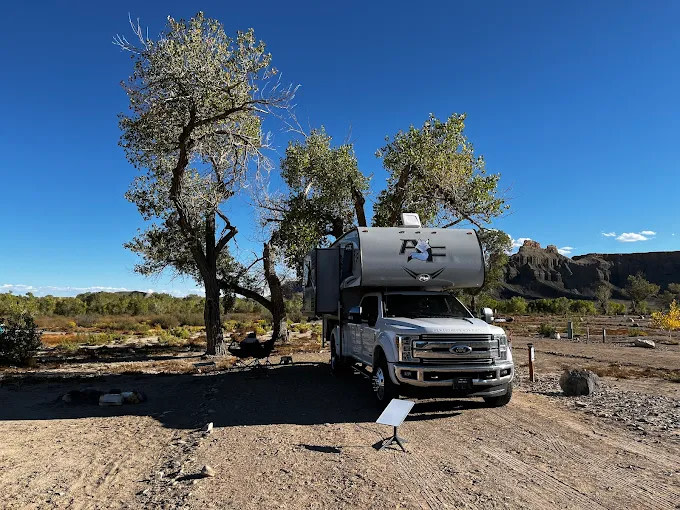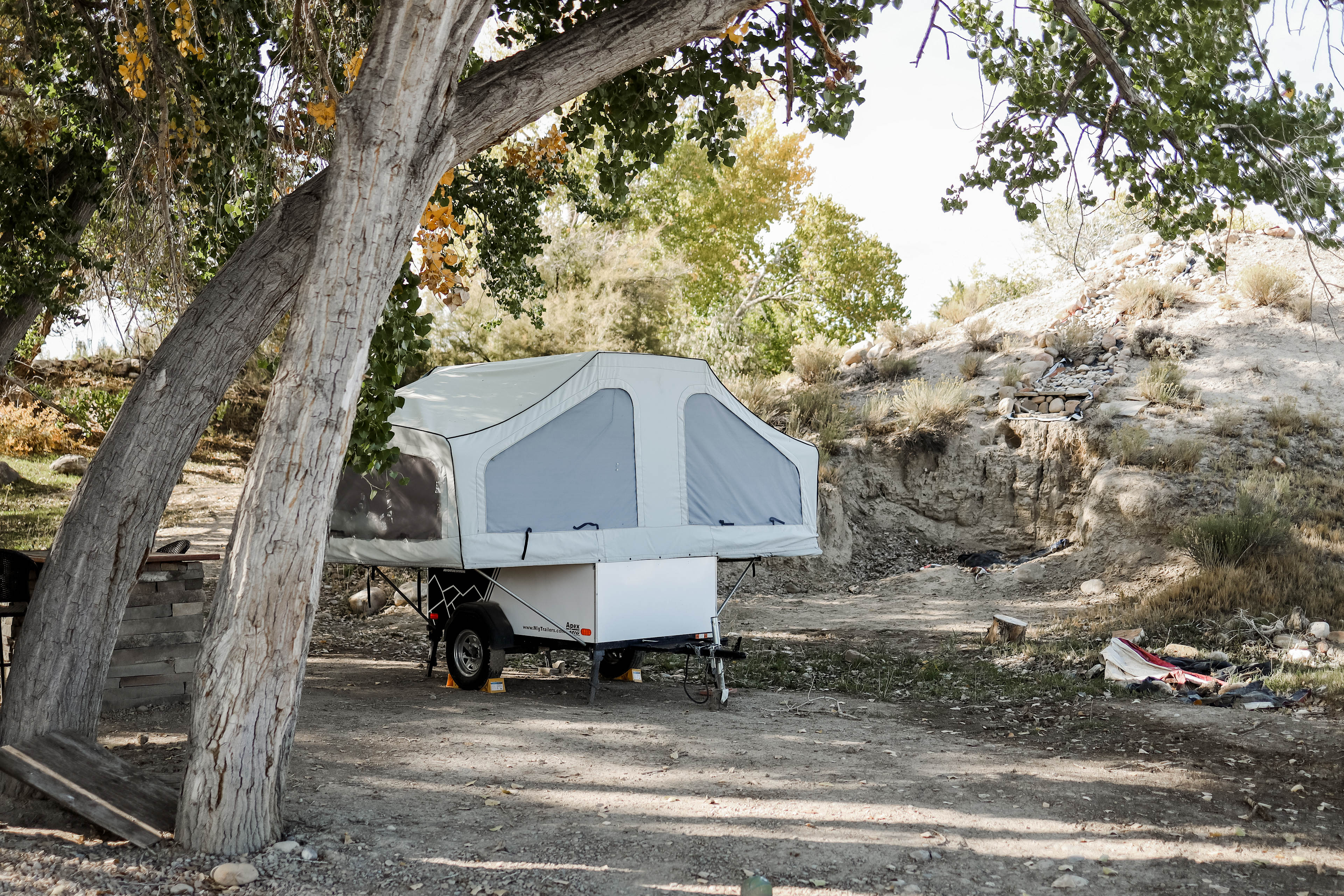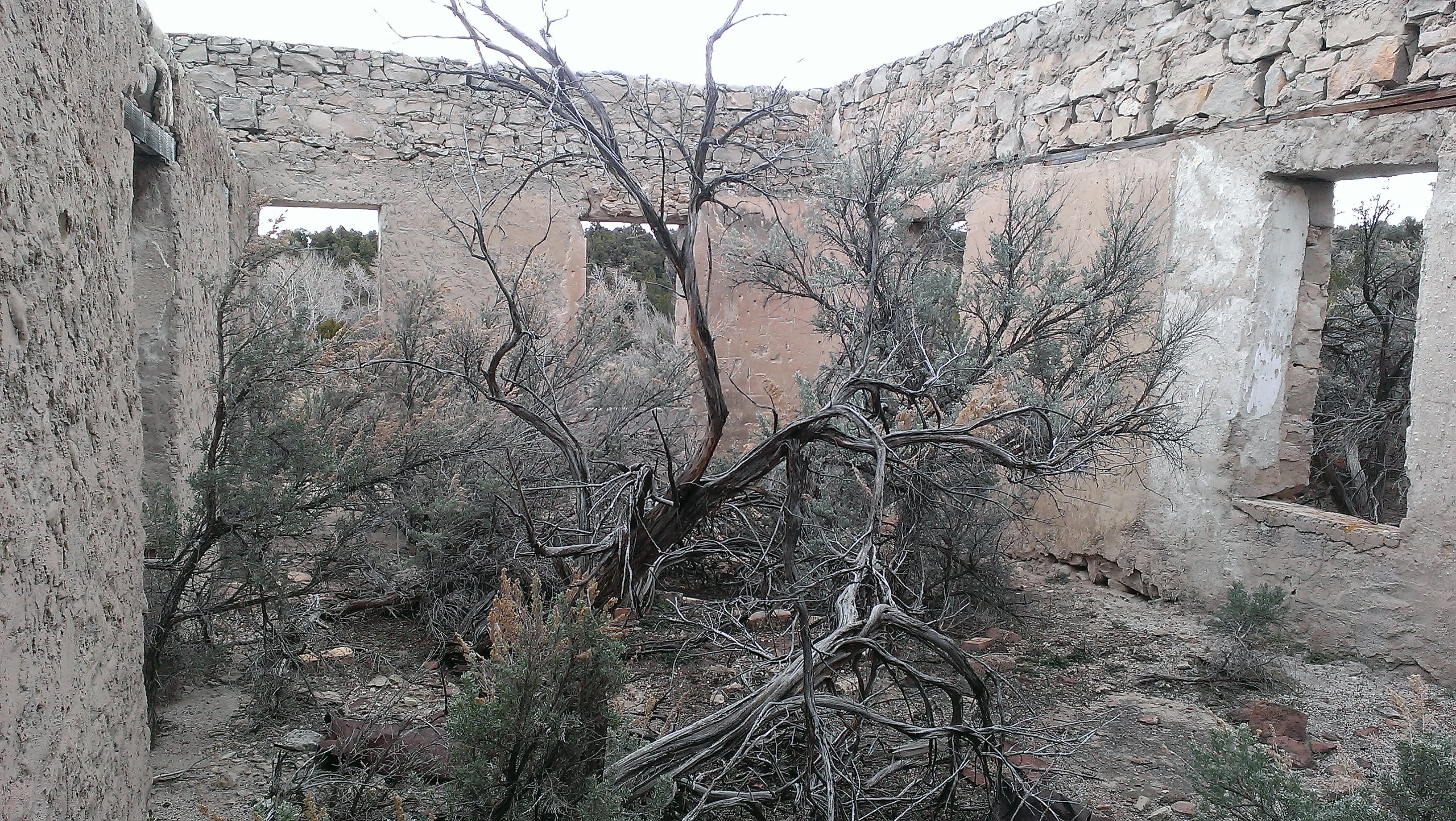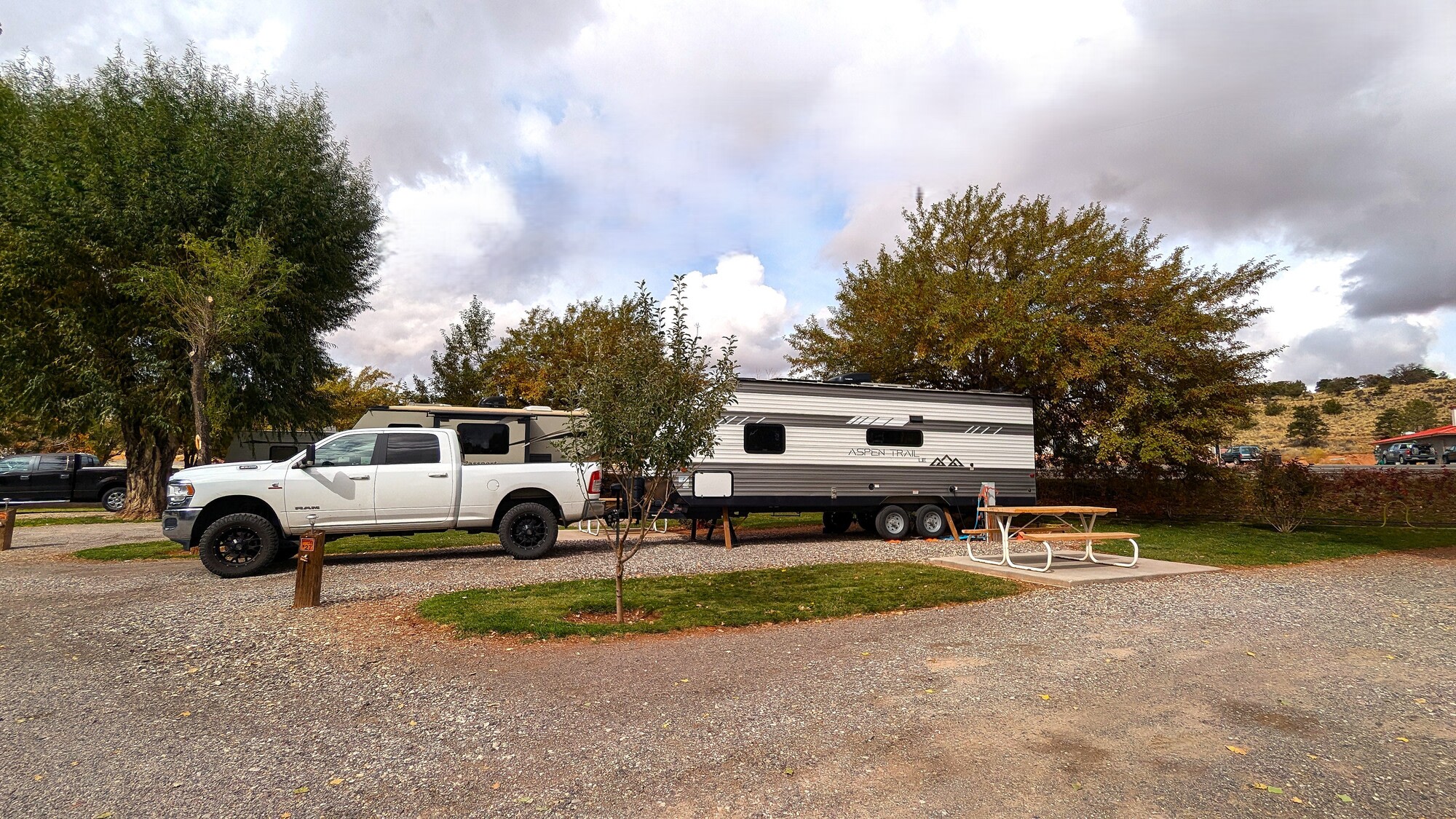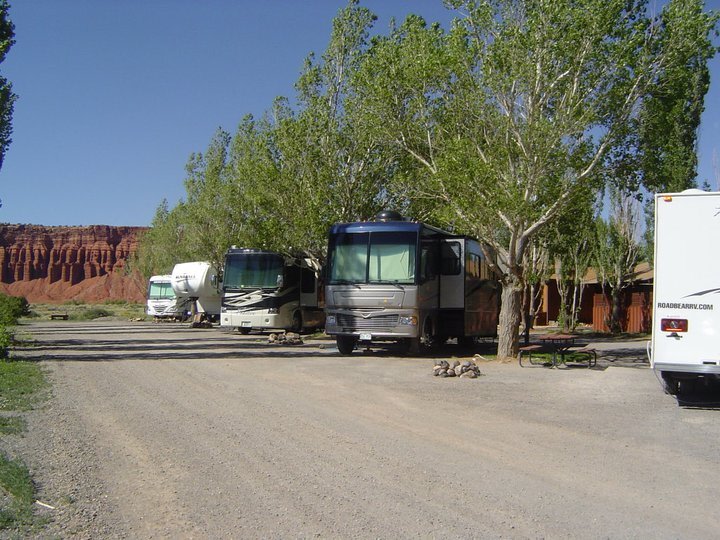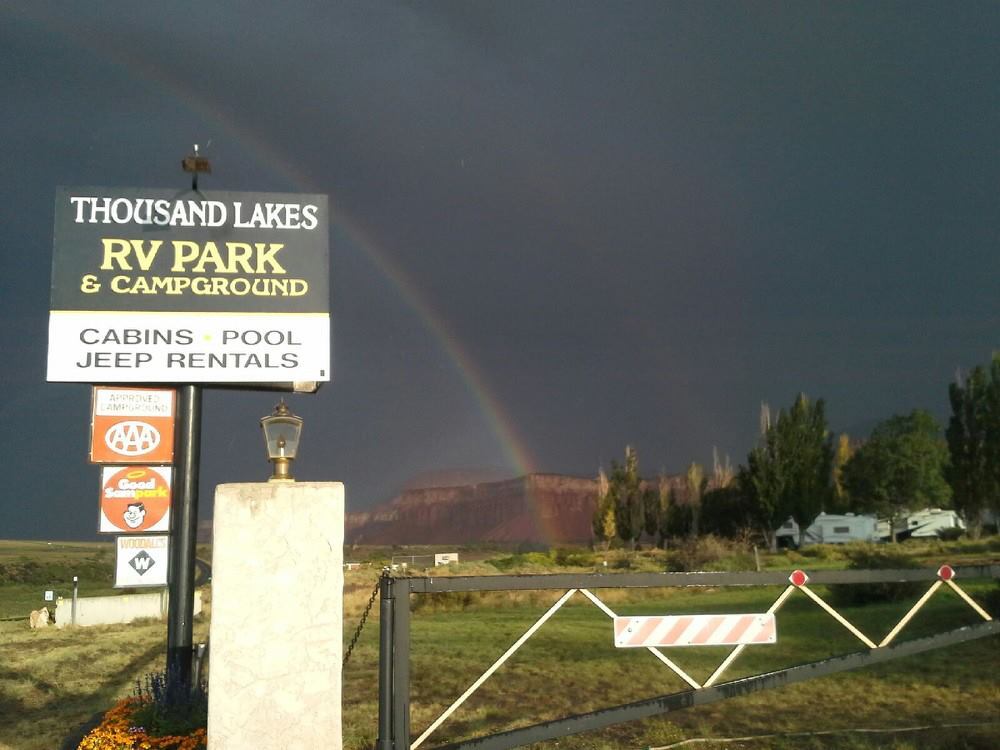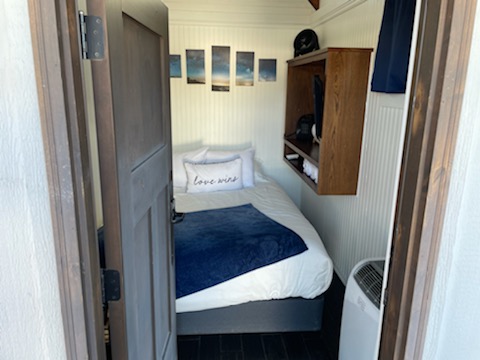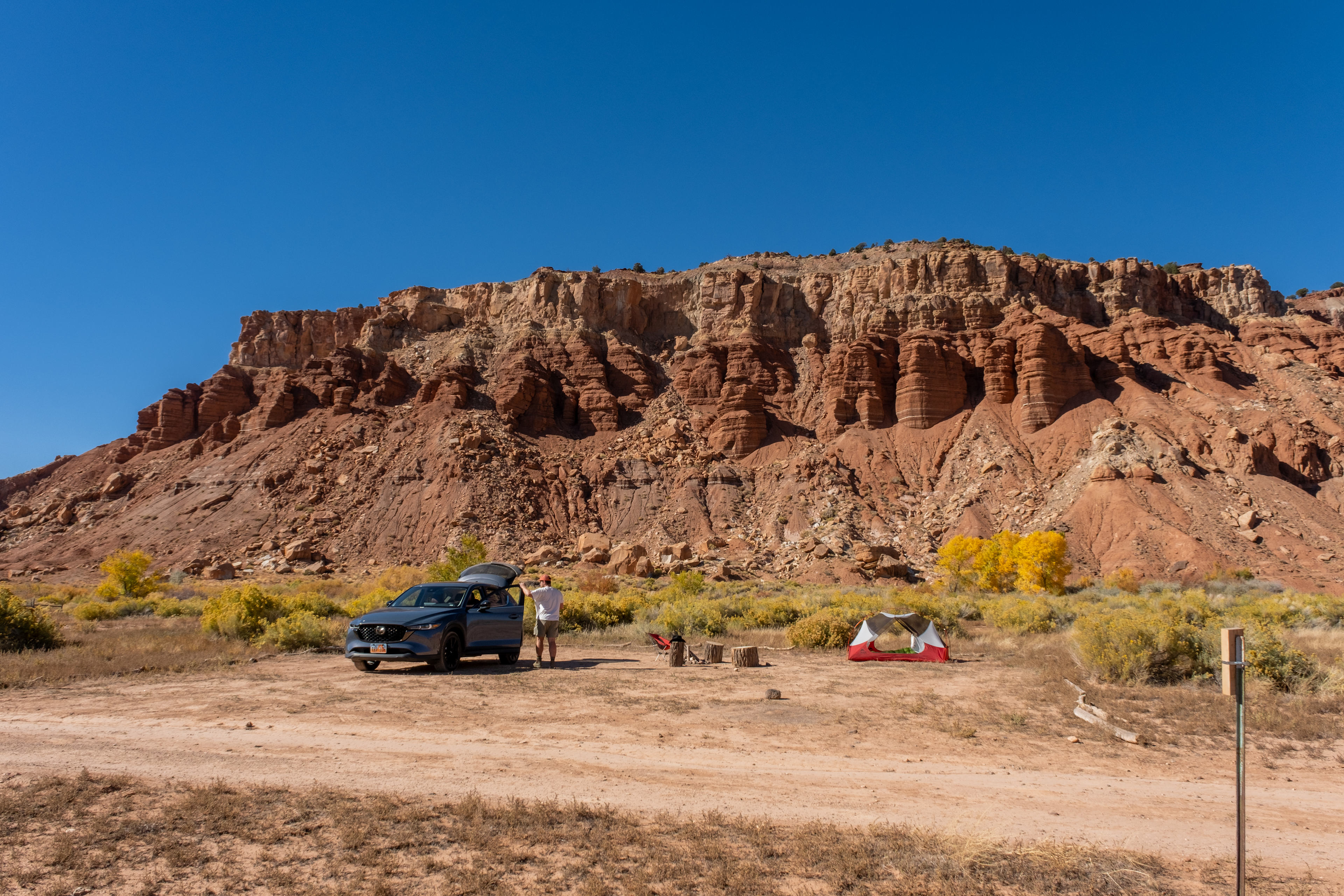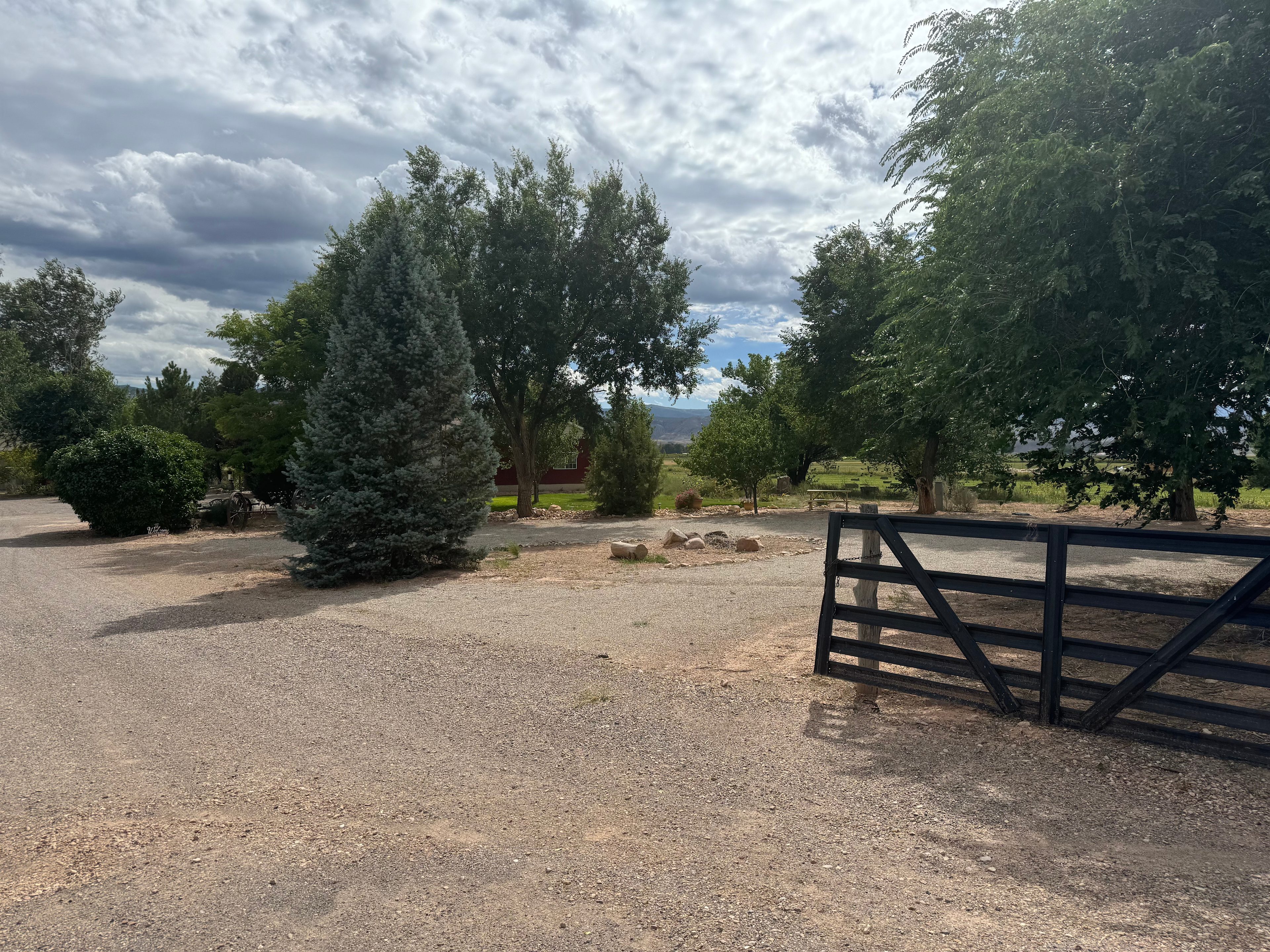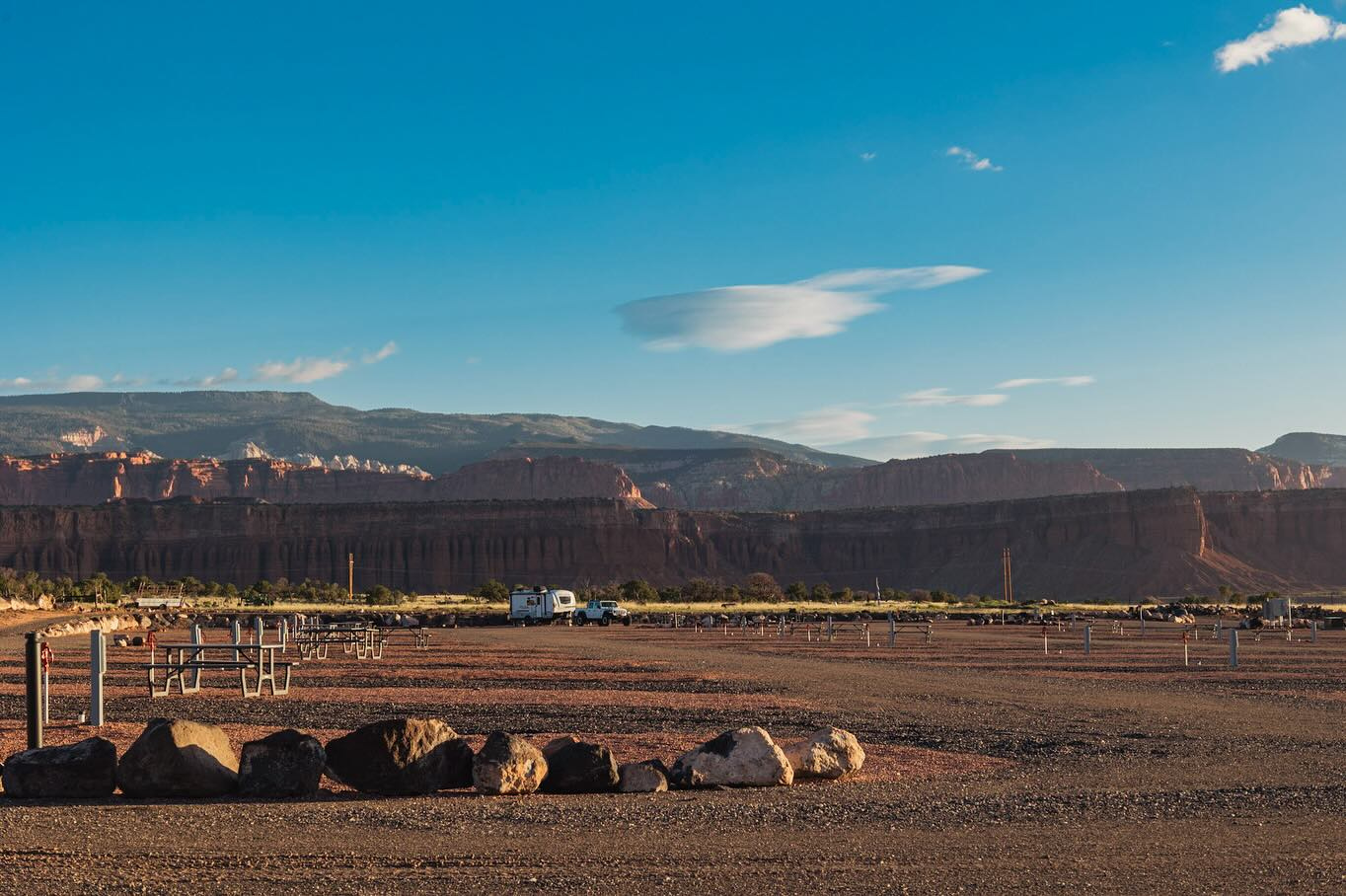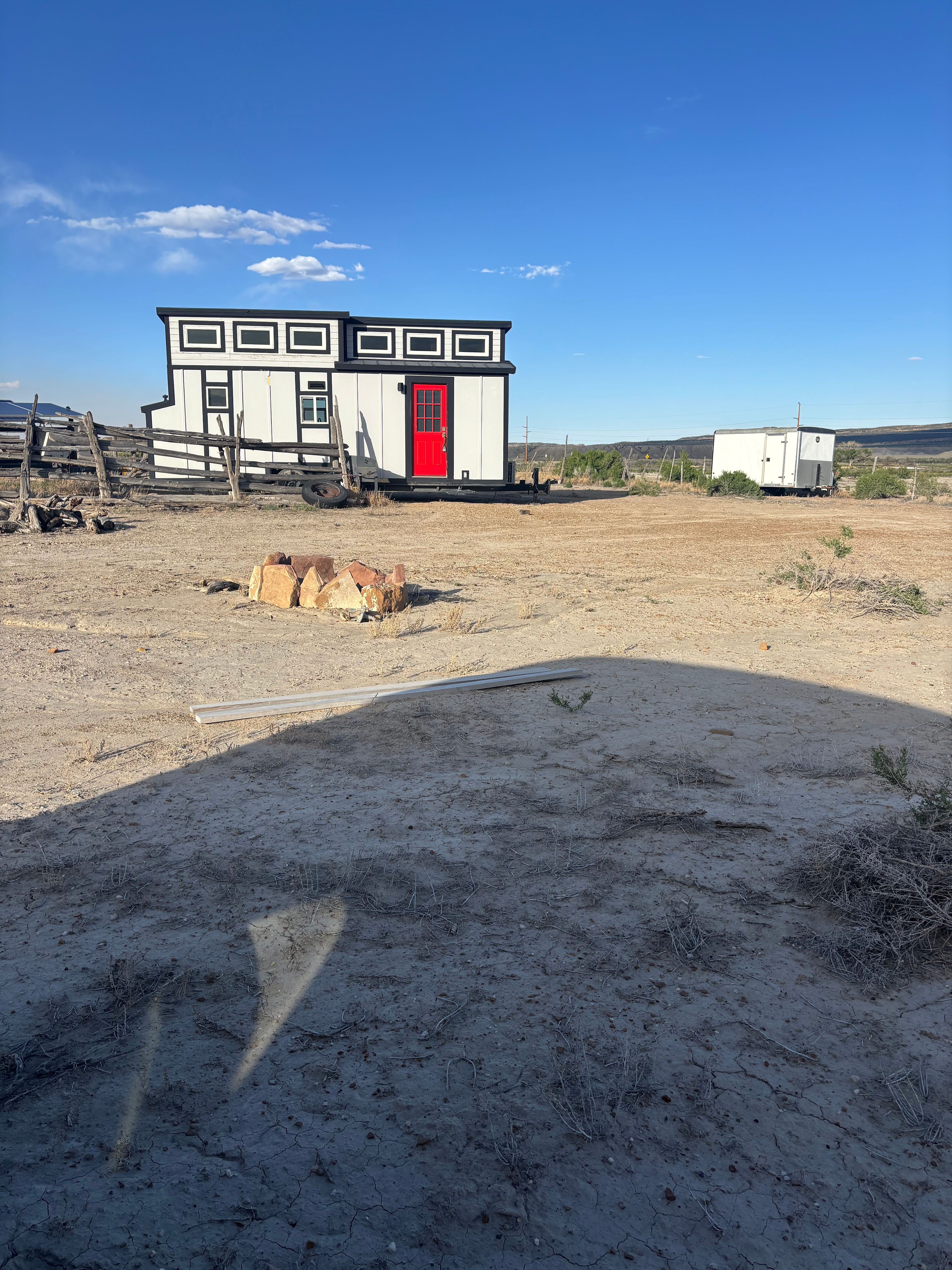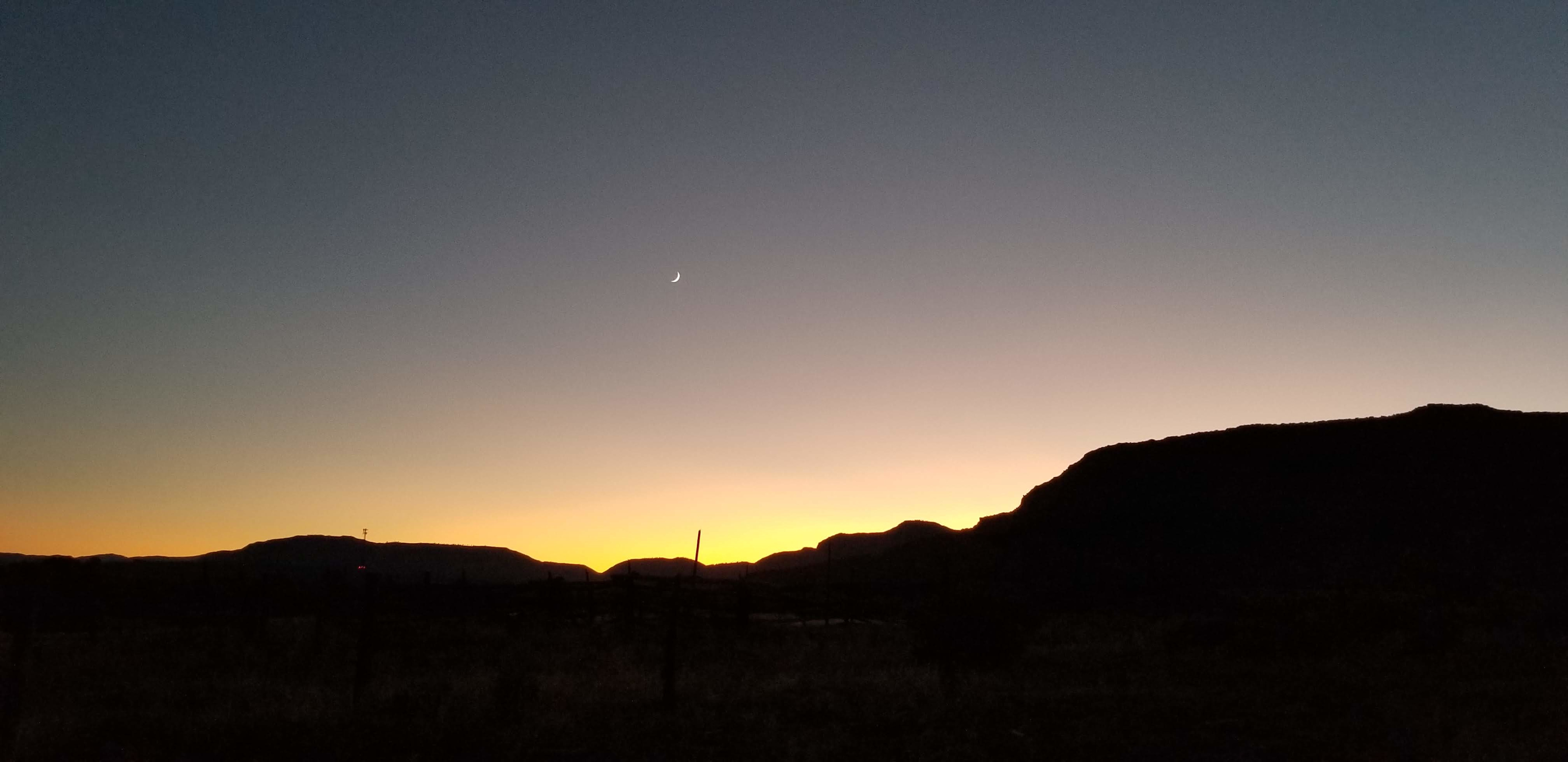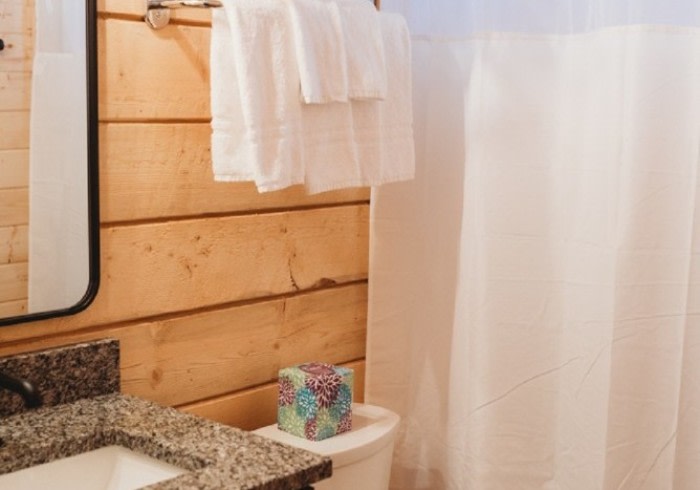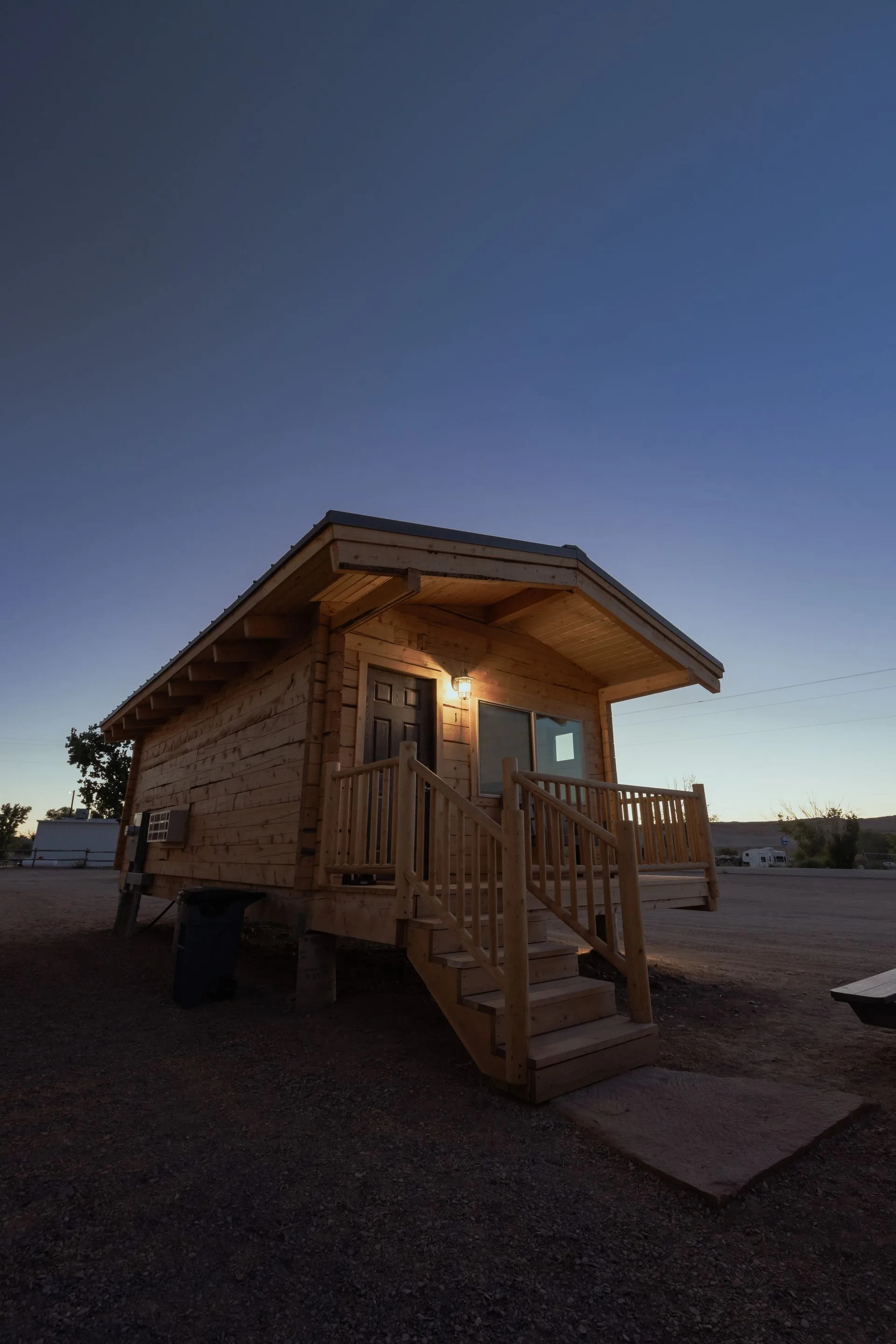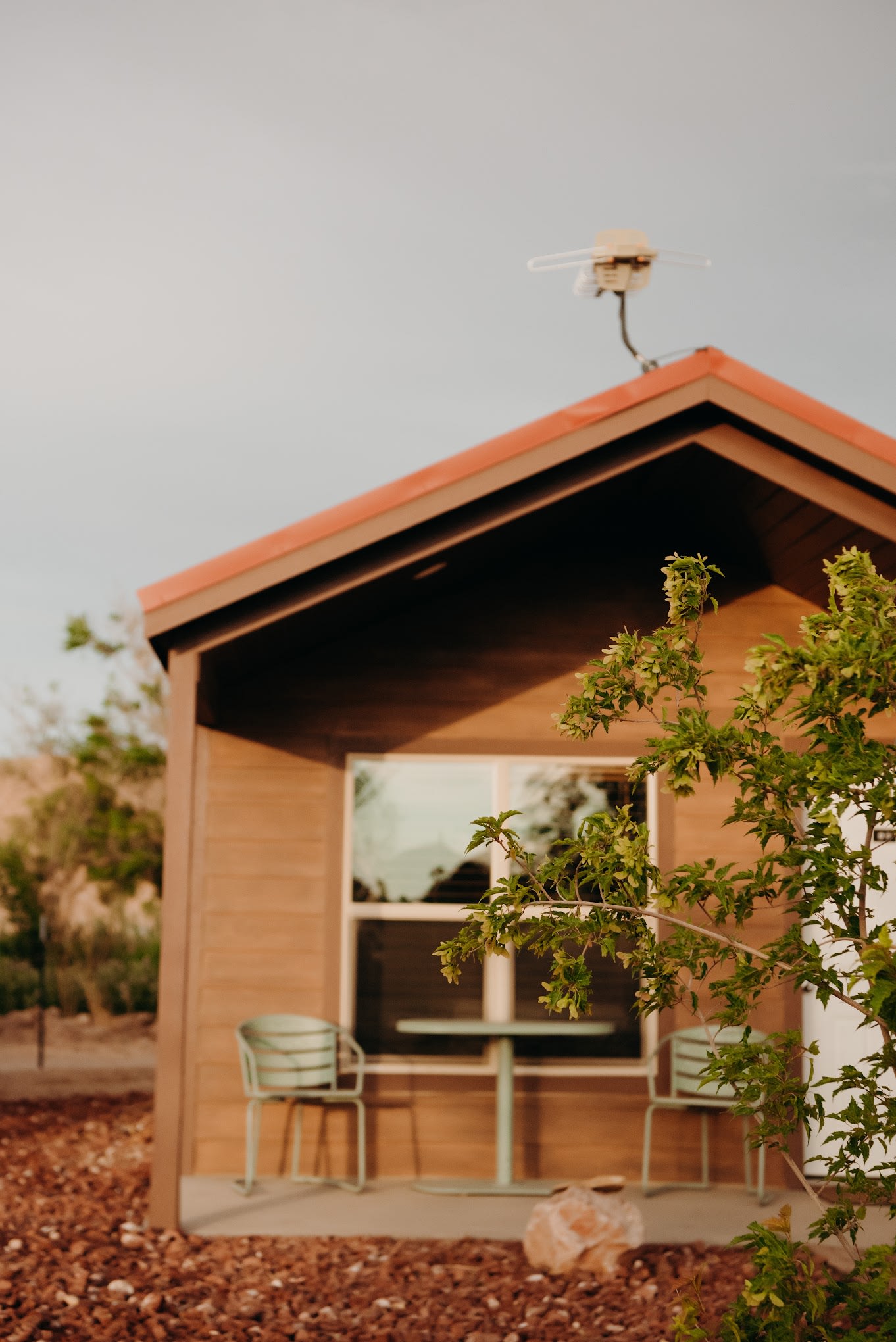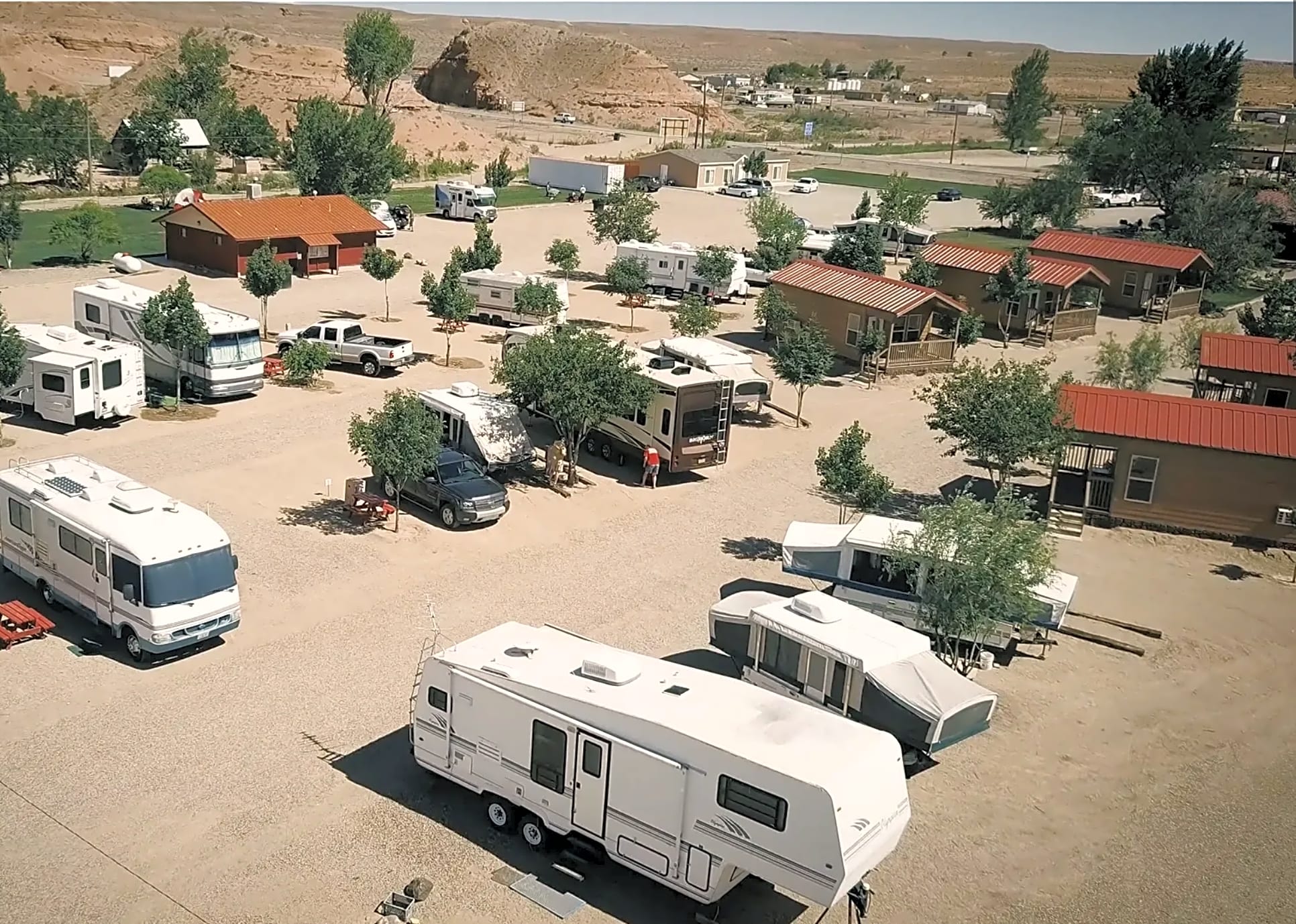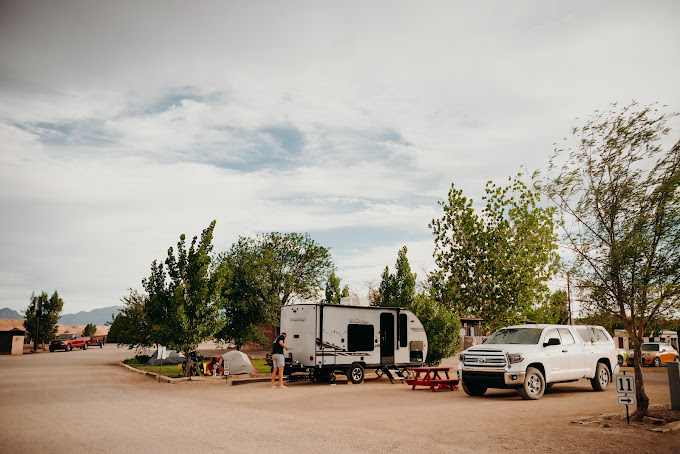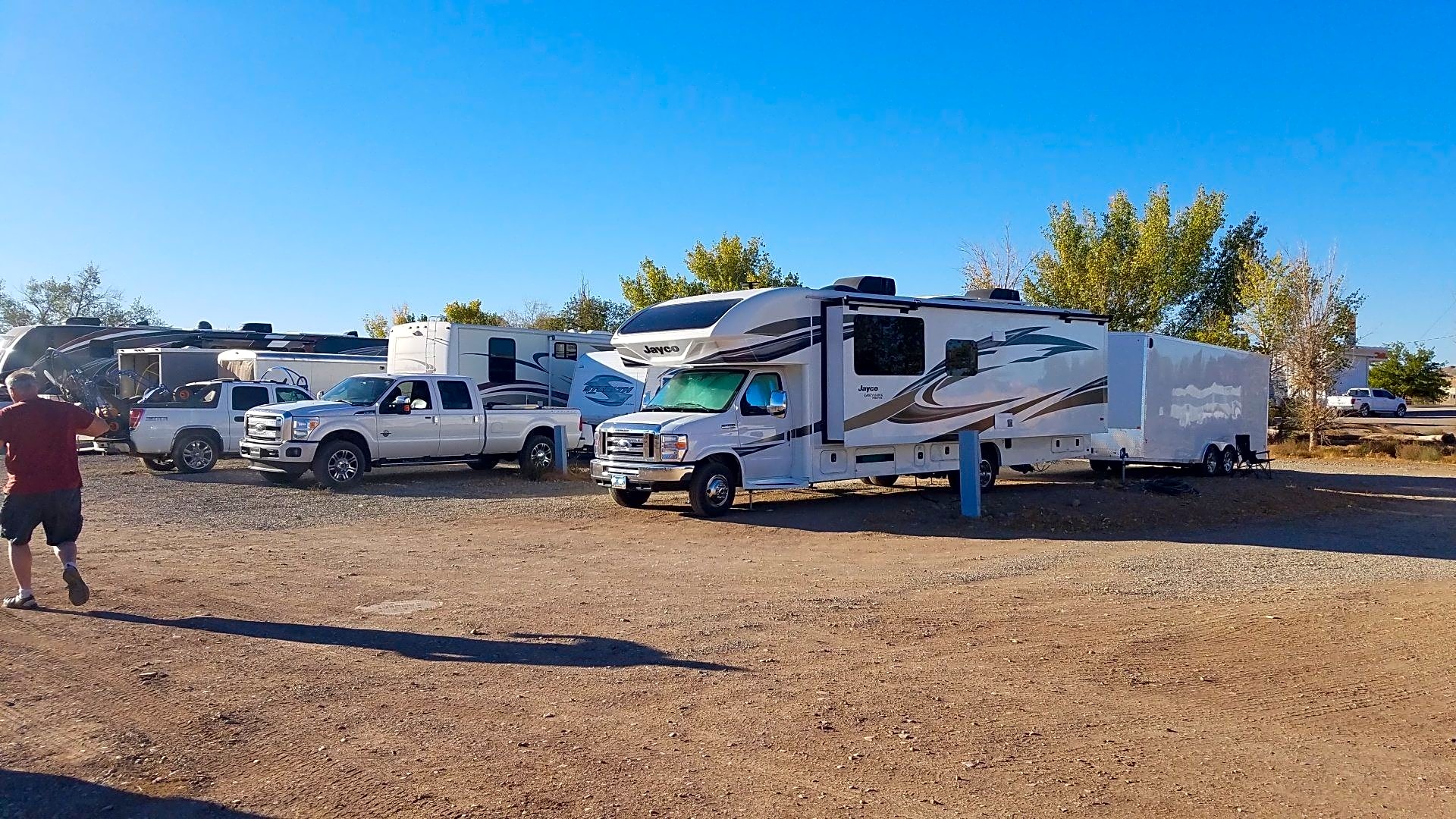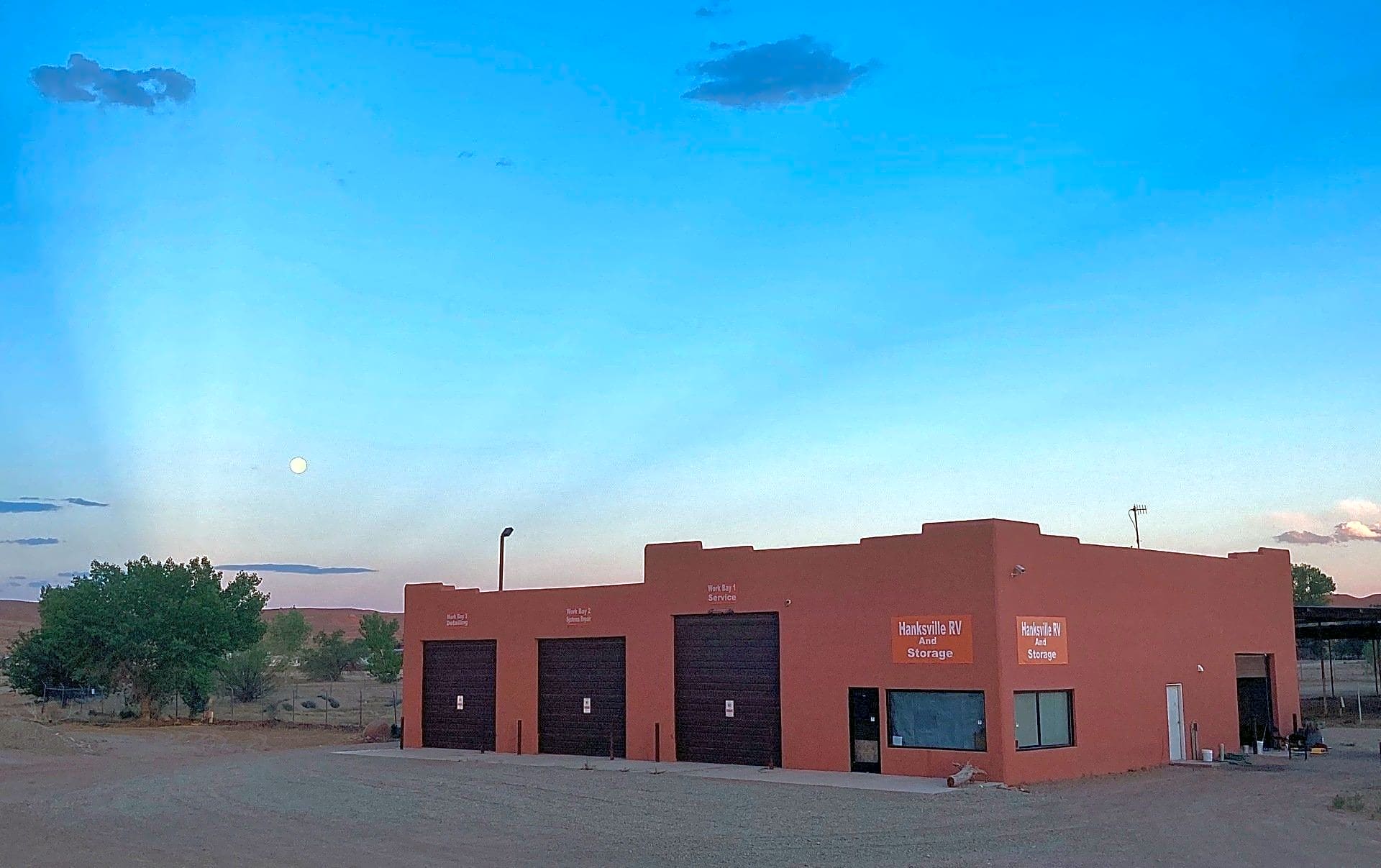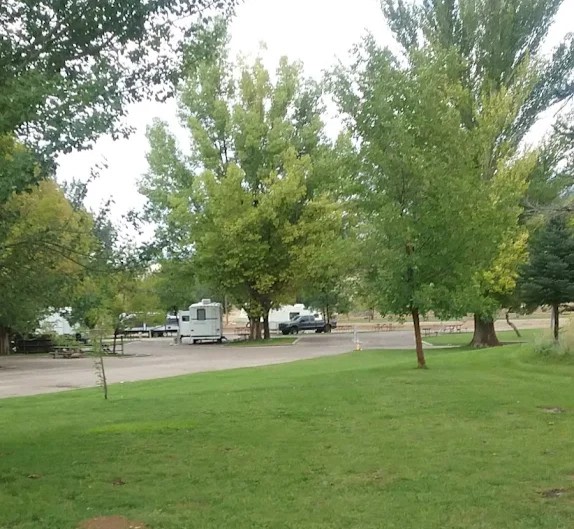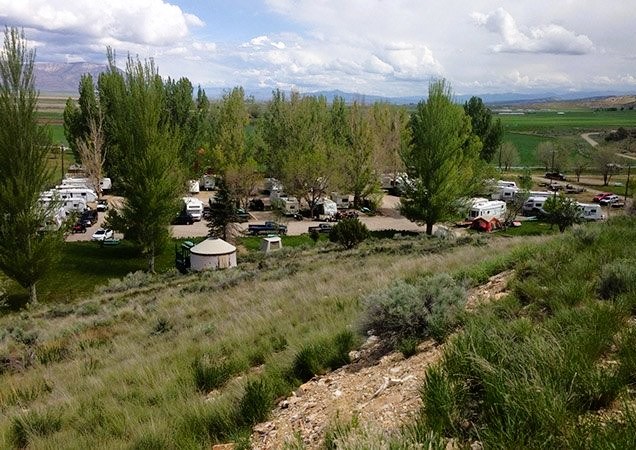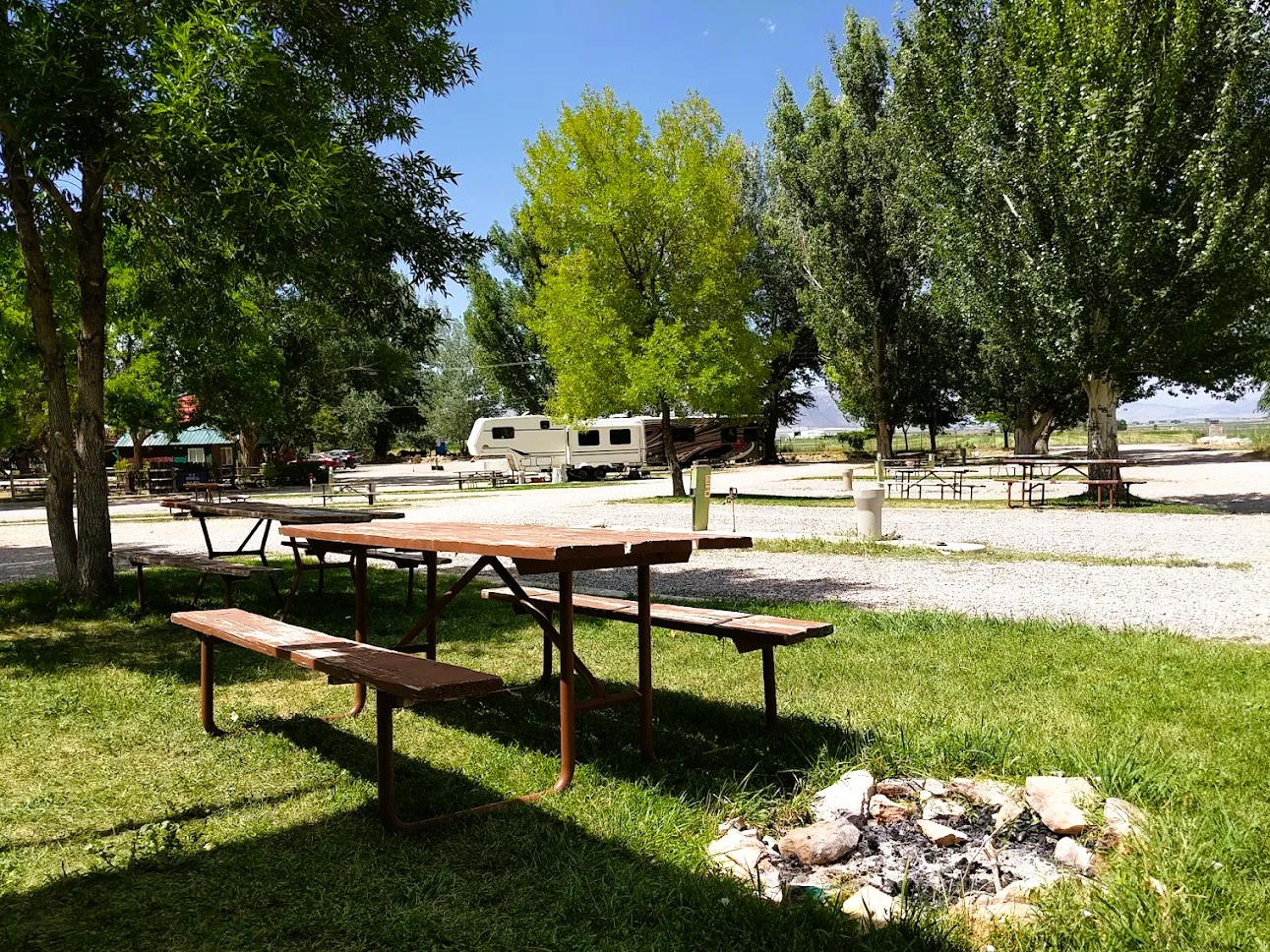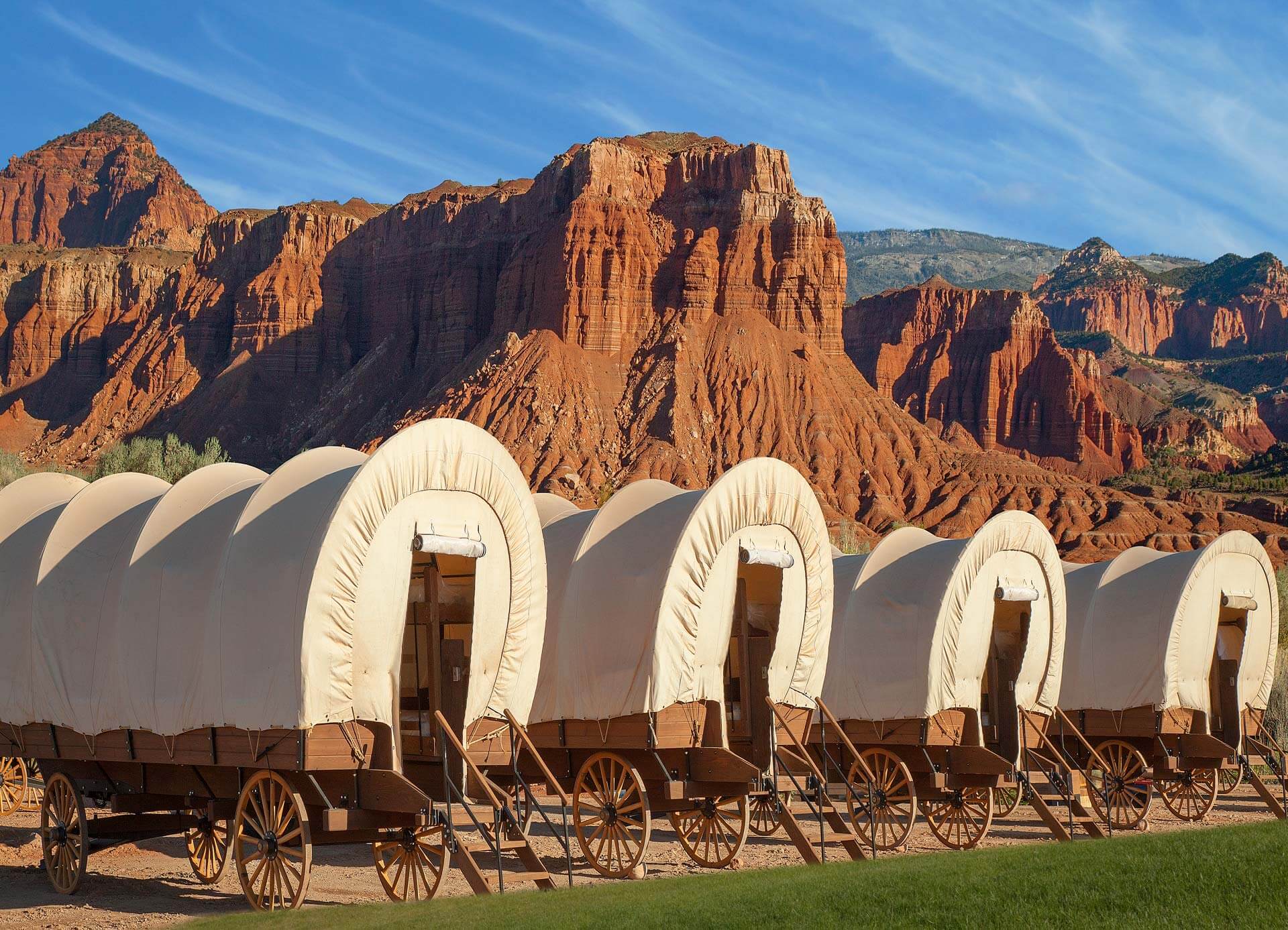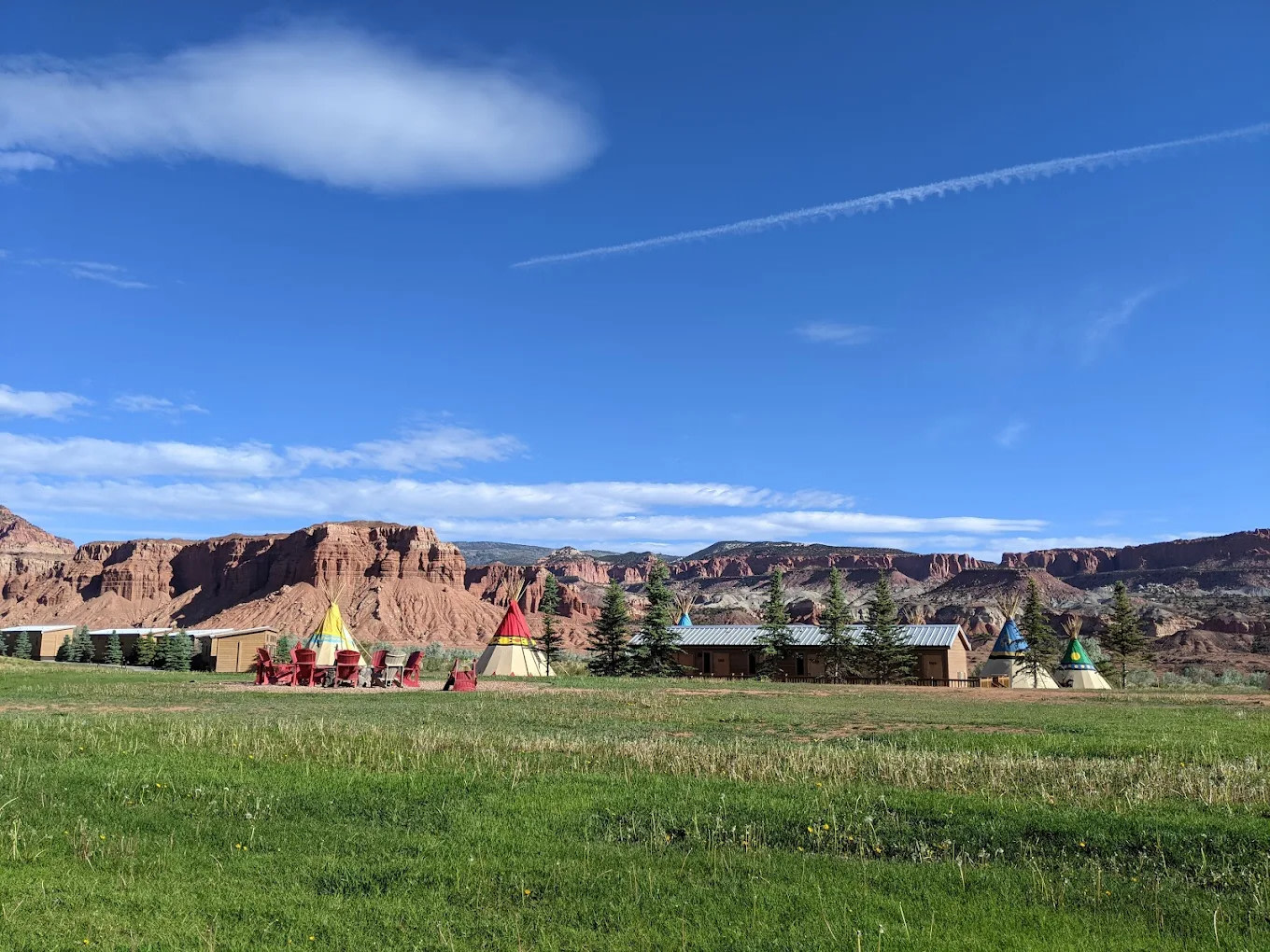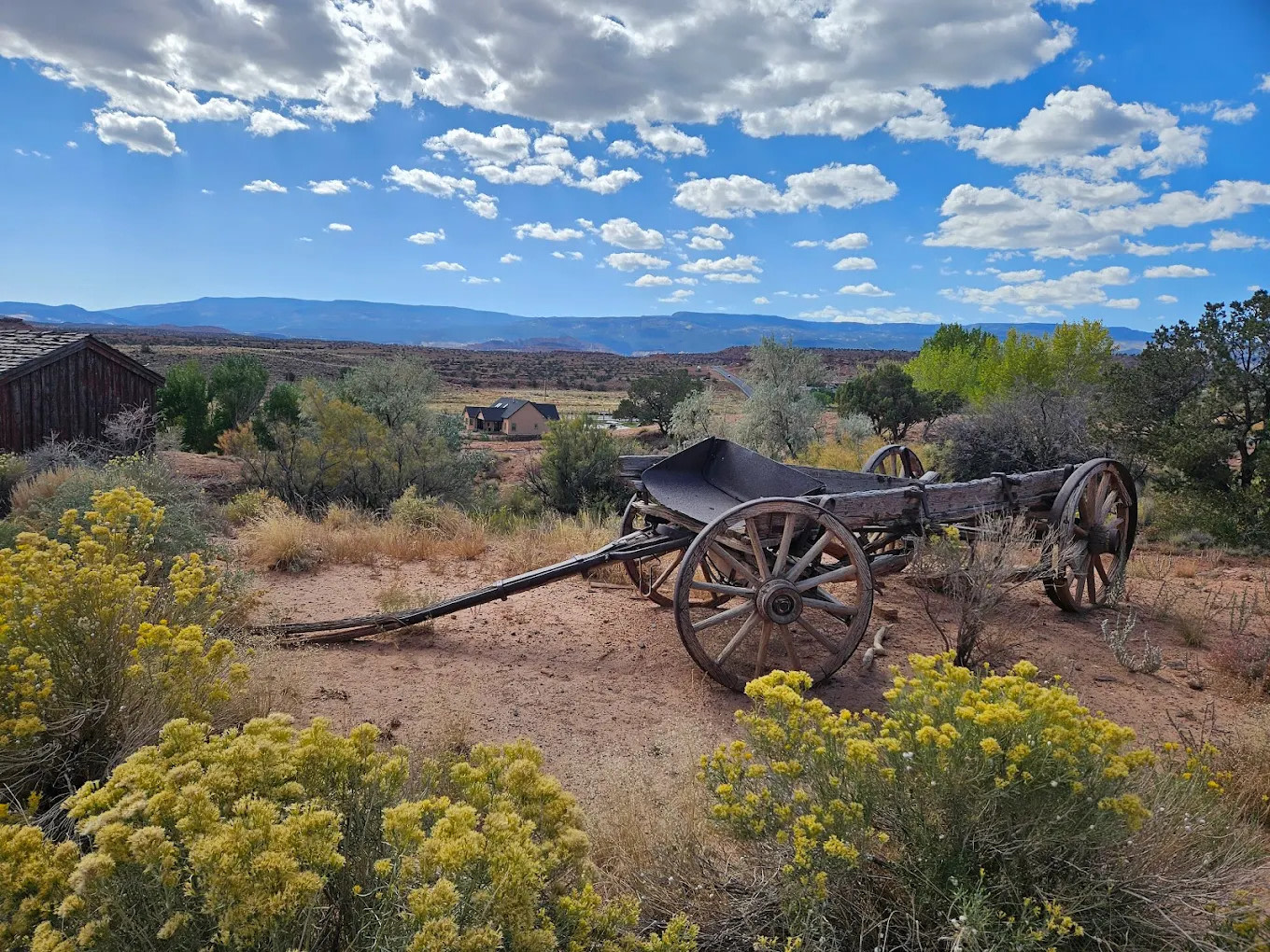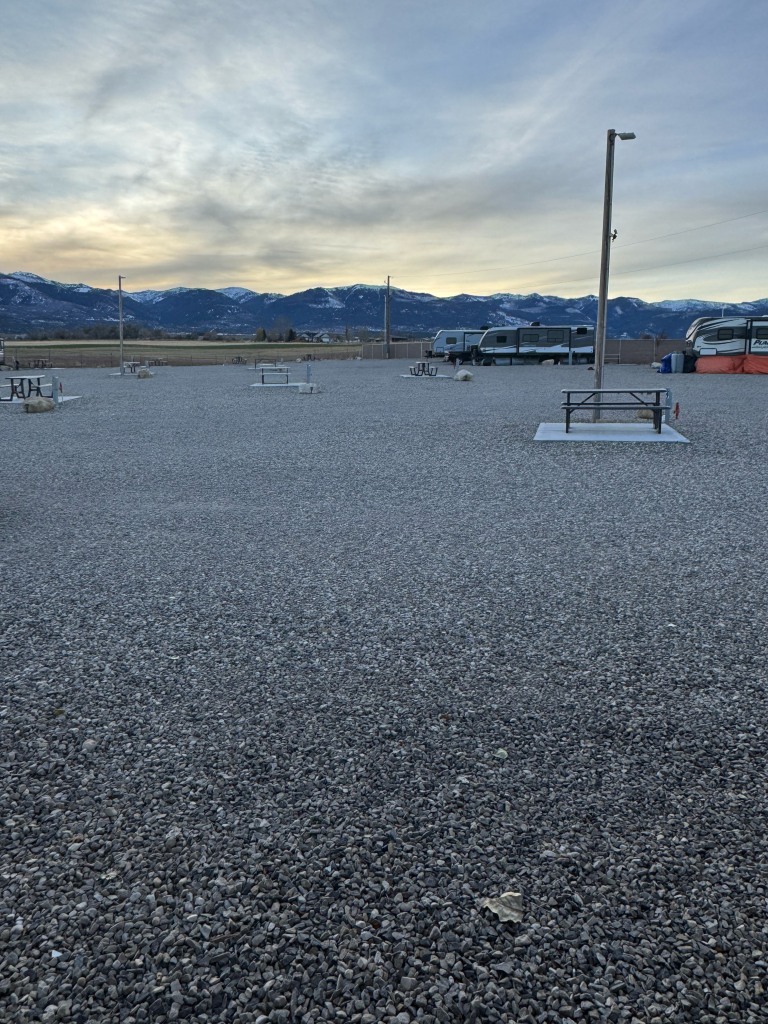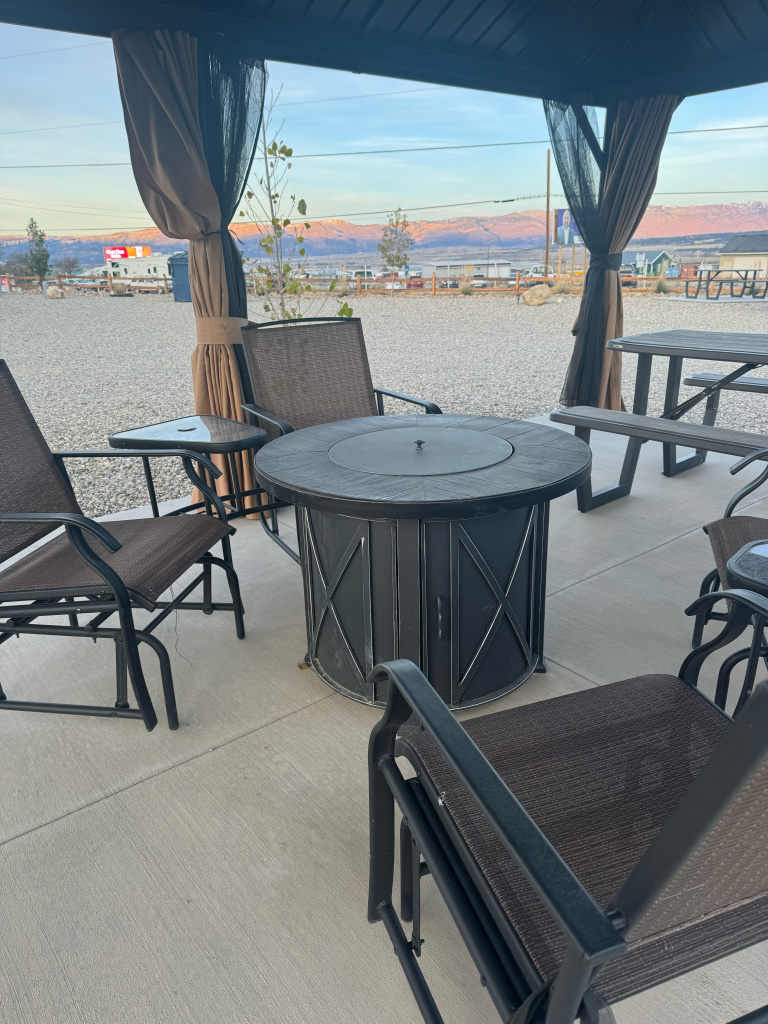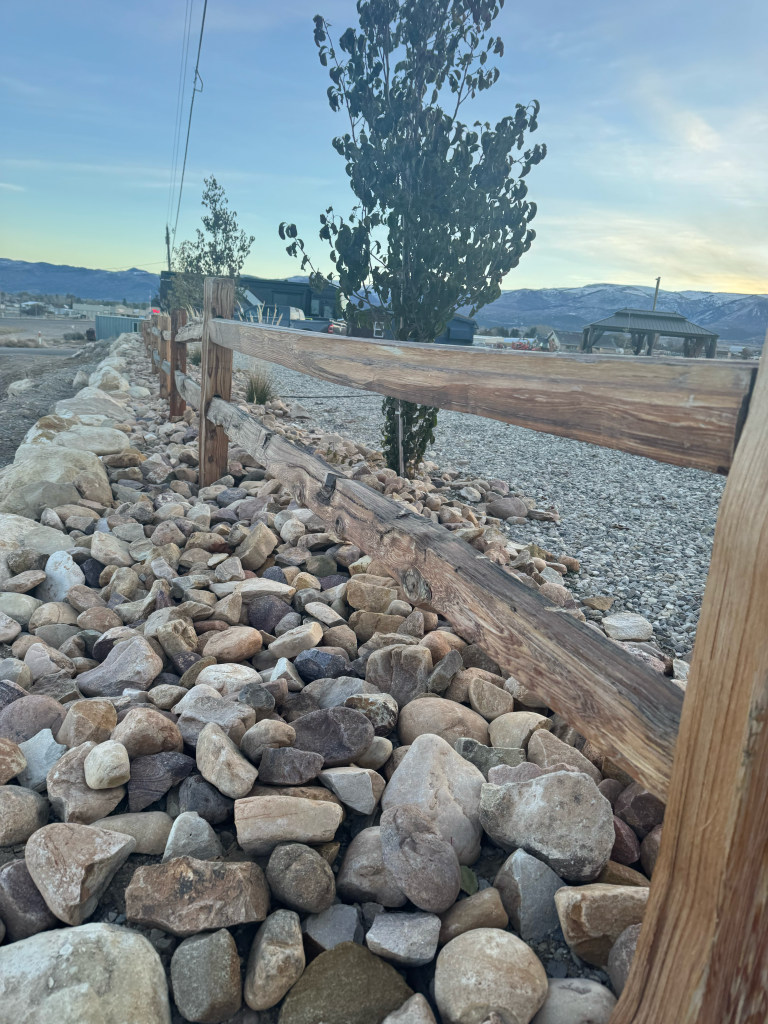42mi from Capitol Reef National Park · 12 sites · Tents, RVs · Huntington, UTFor-the-Outlaw-in-all-of-Us... Welcome!
Better than 1000 acres of Utah high desert bliss located near the spectacular San Rafael National Recreation and Wilderness Area! The ranch was originally home for prehistoric Fremont Native Americans, Ute Indians and later European homesteaders in the late 1880's and early 1920's.
Lots of fascinating historic structures, historic 1916-17 rail line, ~1917 stone brothel, scattered arrow heads, rock bordered walls and farm plots remain untouched on the property. The original Italian Perucci Family homesteaded here and began ranching in the early 1900's.
Learn more about this land:
Camp or hunker down like Butch Cassidy's Wild Bunch probably did at the Hiawatha Hideout! We are a cattle ranch and so much more that is strategically located for easy accessibility.
Check out our new and expanded campsites, road improvements, signage and rock solid CURTEOUSY GUEST WIFI INTERNET! You asked for it and now we've got it!
The Ranch is a picturesque, convenient and very well-hidden secret in Utah's east central high desert and that's how we intend to keep it!
Please remember we are not a developed "commercial campground" and we don't ever intend to be... (there are no hot showers, no potable drinking water, no fixed toilet facilities and no sewer hookup -- but we do have a well maintained port-a-potty and non-potable water for washing, cleaning and showering-- located at the main wagon wheel camp area). We are an historic, goat, sheep and cattle ranch exploring the concept of agri-tourism and are sharing our private property with you as guests. If you are into off-grid peace, quiet and solitude we are your deal!
We cater to the independent "do-it-yourselfer-get-away-from-the-crowd" self contained primitive dry camp type of guest and explorer! Please, please be aware that our main priority is managing the ranch, our offsite farms and our animals scattered in between so we might not always be available every minute to show you in person or answer every call every minute about where to park or where to find the port-a-potty etc..
IF YOU PACK IT IN PLEASE PACK IT OUT! WE DO NOT PROVIDE TRASH PICKUP OR RECEPTICALS!
The only rule here? Do at least the first ~250 yards of the 2.5 mile loop trail hike to the sheep camp, pond and stream and historic stone buildings (the trail head is located on the north side of the main wagon wheel camping area right next to the port-a-potty). The trail immediately descends down a rocky steep and scenic dug-way and follows the course of a small stream, gorgeous cottonwood, pinion pines and juniper trees!
Don't forget your camera and be sure to keep an eye on your kids and pets. Watch your step and be on the lookout for steep ledges, drop offs, tree branches, sharp rocks, barbwire, a twisting trail and variety of native animals and birds. Take the full loop and find the hidden and historic stone brothel/dance hall (yup, an honest to goodness house of ill repute... ) located right next to an historic rail line that connected the towns of Price and Hiawatha back in ~1916 & 17!
We are family, individual and large group-friendly self container camping area that provides easy local access to virtually unlimited camping, hiking, mountain biking, horseback riding (subject to availability of our Wranglers and riding stock), photography, wildlife viewing and exploring in and around Utah's (less well-known, yet truly spectacular) northern San Rafael Swell Wilderness and Recreation Areas!
CHECK OUT OUR NEW LOCAL AND EXTENDED SAN RAFAEL SWELL RECREATIONAL AREA WIDE TOURS! (subject to availability of our Wranglers). You'll be riding in an epic Land Rover Defender 110 (seats 8 with integral factory seat belts; see our "experiences" below to check availability!).
Butch and Sundance knew where the off grid good spots were and undoubtedly spent time here... and that's why you should too! Concerned about video teleconferencing or missing your favorite episode of Yellowstone or Longmire? We've got you covered! Our open WIFI guest network provides stable up and download speeds that are unbelievable! The main camp site has excellent strong (3-4+ bars) cell service with all major carriers too!
Park your large RV with towed vehicle, trailer or small SUV and tent at one of multiple camp sites from near commercial camping grade (Sites 1, 5 and 6 have 120 v ac 30 amp service, site 2 has 220 v 50 amp service) to site 10 in your own tent bushwhacking at a remote stream bank isolated hideaway requiring all wheel drive short, narrow wheel base and high clearance vehicles only that may include a difficult stream crossing or just hike in ~1 mile (contact us for the current trail/road conditions).
With over 1000 acres to roam, we can provide almost unlimited over flow camping that is of variable distance from the main wagon wheel camp area. If we are booked send us a message/email and depending on your group size, number and size(s) of vehicle(s) we'll see if we can work out an alternative over flow camp site just for you!
Explore the tranquil seclusion along picturesque Miller Creek as it courses for a mile bisecting the center of the ranch. Cool your feet in the crystal clear water at noon or take a nap in the shade of magnificent riparian cottonwoods. Check out the 1/2 acre hidden pond and spring!
Avoid worrying about full campsites (particularly on weekends and holidays) as you'll find the privacy, safety, and solitude you're seeking among pinion pines, hundreds of years old twisted cedar (juniper) trees and crystal blue clear skies!
Close your eyes, feel the cool breeze and take in the scent of a burning cedar campfire. Bask in splendor while camping on the east slope of the spectacular Manti La Sal National Forest, Star Point and Gentry Mountain!
Relax, avoid the traffic, headache, congestion, and noise of more well known and more heavily visited recreational sites before you head back to civilization! Isn't that what you really intended to do?
Prep the mountain/electric bikes and lace up your favorite hiking boots or jogging shoes. Maybe kick back and enjoy a quiet evening around the large group camp bonfire! Later, take one of the unimproved trails for an off-the-grid reclusive expedition or look for that perfect remote camp site.
Colloquial western folk tales, ghost stories and some incredible western music can be had here as well as horse trail rides and even a motorized tour are available (seasonally dependent, please contact us before booking regarding availability).
Just one more thing... Since the ranch is bordered by public federal BLM and state SITLA lands there are literally thousands of additional acres to explore but only accessible through the ranch main gate. And for Pete's sake don't forget extra fuel, food, clothing and your camera!
Discover the historic stone brothel (that's right including a bar and dance hall built in ~1916). Try to decipher a late 1880's inscription on the back wall!.
Hike, bike, or ride along the bed of the historic Utah Railway line that connected the towns of Price and Hiawatha via a rare early gasoline propelled locomotive back in 1916-17 (lasted only a few years before an historic flood destroyed its trestles). Check out the remains of a 100+ year old relic pump house, spring, and pond that settlers relied on to irrigate cultivated farm plots on the historic homestead.
Keep an eye out for deer, moose, coyotes, rabbits, golden eagles or a lonesome cowboy moving cattle along your path. Wake early and stay up late for a spectacular summer sunrise and sunset at the main group campsite. Corral and rest your horses in one of three enclosures outfitted with automatic waters, feed tubs, and onsite alfalfa/grass 2 string bales (made available on request). And don't forget to take a dip in one of the two solar-powered cattle watering troughs if it gets too hot!
Check out an absolutely gorgeous vintage restored 1920's sheep camp (our favorite) or simply throw out your bed roll under the stars about anywhere!
The Hideout is located ~20 miles as the crow flies south of the infamous "Castle Gate hold up" that was staged on April 21, 1897, at the mouth of Price Canyon in east-central Utah. Located 15 miles (as the crow flies) from the San Rafael Swell's "Wedge Overlook" (aka Little Grand Canyon) and within easy striking distance of the Buckhorn Wash, Cedar Mountain, Tavaputs Plateau, Huntington Reservoir, Electric Lake, Scofield Reservoir, Joe's Valley Reservoir as well as countless other recreational sites in Carbon and Emery County!
In need of a place for this summer's family reunion? This is it! Have a grand ole' shootin' time in an authentically recreated western town with saloon, bank and out buildings at the neighboring world class "North Springs Shooting range" (Single Action Shooter Society--SASS approved) or practice at the modern pistol, rifle, long distance and/or archery range (located just a couple miles north and east of the ranch). ATVs? there are hundreds of miles of public trails/2-tracks on state and federal lands just outside the ranch's boundary to explore in almost any direction surrounding the ranch.
Got a hunter in the family? Because the ranch borders the majestic central Utah Manti La Sal mountain range it is key winter range for a very large number of mule deer, elk and other wildlife. Take your favorite hunter on a mid-winter photography extravaganza and enjoy once in a lifetime monster trophy rutting mule deer bucks that will leave even the most proud hunter in awe!
Check out the petroglyphs and pictographs of nearby Nine Mile Canyon (largest collection on earth) or stay put and visit what's left of the ranch's original homestead, early European settlers' stone buildings, prehistoric Fremont Indian pit houses, pioneer dugouts or simply enjoy the spectacular topography, wildlife and scenery.
Located just 20 miles away from The northern San Rafael Swell of Utah, you're away from the crowds and perfectly situated for exploring! You'll also be just off the well-beaten path to Moab and Hanksville, and a plethora of national parks, monuments, and state parks (including Canyonlands, Capital Reef, Goblin Valley, Horseshoe Canyon, Glen Canyon National Recreational Area and Lake Powell to name just a few).
Gratuities are welcome from our visitors and campers. We appreciate your patronage! We grew up on the “No Trespassing” side of a lot of fences and know what a privilege it can be to visit and be welcome to explore historically off-limits “private property”.
Recognizing just how fortunate we are to own the Ranch makes sharing it with others easy. All we ask is that you admire it, protect it and respect it as much as we do.
We have undertaken a variety of ongoing environmental conservation and agricultural stewardship improvement projects collaborating with state and federal conservation agencies as well as multiple not-for-profit wildlife and habitat organizations who have helped improve the aesthetics, historical recognition/preservation, natural beauty, range carrying capacity and rehabilitation after years of unregulated grazing of riparian zones to help maximize the wilderness health, diversity, beauty and agricultural sustainability of the ranch.
We feel it is a privilege to share it with others of like mindedness. Gratuities are used for further wildlife/conservation improvements, cleanup, toilet facilities and a variety of range land and watershed improvements. Once at the ranch you’ll belong to a select guild of visitors and campers who return year after year who we call "friends" and to whom we will be indebted forever.
We strongly advise all visitors and campers to comply with all local state and federal COVID health recommendations/guidelines. Please message us for more information.
Thanks in advance!
NOTICE: We are not responsible for or liable for any and all accidents, injuries, falls, animal encounters, drownings, deep mud, slippery conditions, fire, lost or stolen items, damages, loose barb wire, fences, broken glass or vehicles left over 7 days or any other physical, emotional or monetary loss and/or injury that may occur traveling to, during or after your visit. Our ranch and camp areas can and do experience severe weather, including, but not limited to, heavy rain, flash flooding, strong winds, impassable roads, dislodged rocks, deep snow and freezing temperatures. We do not condone or permit the use of any illegal and/or all hazardous devices, materials or activities on the ranch. Ranch guests are not allowed to use motorized off road vehicles (i.e. motorcycles, ATV or UTVs) within the ranch boundary. The ranch does have a variety of resident and transient farm/ranch animals as well as wild animals that can and frequently do gain access to the campsites, hiking/biking trails and recreational areas, including, but not limited to, cattle, horses, mules, donkeys, coyotes, bears, raccoons, bats, rodents, badgers, eagles/hawks, venomous snakes/reptiles/spiders/scorpions and even mountain lions. Wild and domestic animals may harbor dangerous pathogens, diseases and parasites, including but not limited to ticks, tick borne diseases, rabies, brucellosis, giardiasis and a variety of other infectious and parasitic diseases (i.e. Lyme disease, ring worm, tapeworms, prion disease and infectious diarrhea). There are physically dangerous cliff ledges, drop offs, erosive stream banks, construction/landscaping/agricultural heavy equipment, trenches, holes and other potentially hazardous places and things on the ranch. Plan accordingly, watch your children and pets carefully and continuously and always be attentive to your surroundings and circumstance as your life and/or the lives of your loved ones may depend on it.
All guest camping, visiting, activities, expeditions and "experiences" provided by "The LZJ Ranch" or "The Hiawatha Hideout!" are operated under the management of Hiawatha Hideout, LLC and/or San Rafael Tours, LLC.
Pets
Electrical Hookup
Toilets






